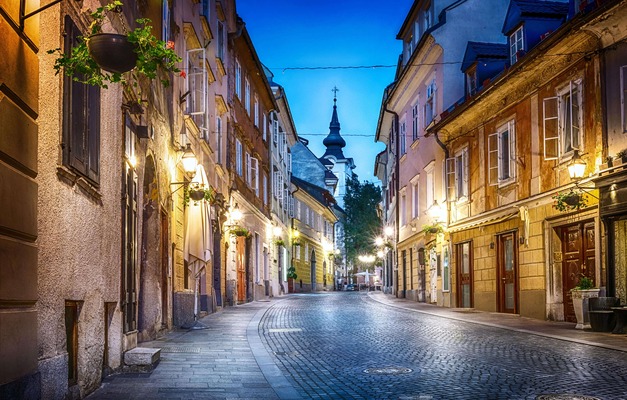
Explore the Best of France, Spain, and Portugal in 2 Weeks
 15 Day Tour of Paris, Barcelona, Madrid, Porto and Lisbon
15 Day Tour of Paris, Barcelona, Madrid, Porto and Lisbon
Overview
Trip Map
Itinerary
Inclusions
Reviews







15 Days 14 Nights
Best Time: Jan-Dec
Cultural Exploration
History Buffs
Journey to the most beautiful cities of France, Spain, and Portugal on a captivating 15-day adventure, from the elegance of Paris to the charm of Lisbon. With private guided tours in every iconic city, take in unforgettable views from the Eiffel Tower, marvel at the intricate beauty of the Sagrada Familia, and discover the fascinating past of Lisbon's Jeronimos Monastery. Embrace the vibrant life of Bairro Alto, savor world-class wine in Porto, and explore royal palaces steeped in centuries of history. Each destination is brought to life with expert travel guidance through our Go Real Travel mobile app, ensuring that your trip is seamless.
- Explore Montmartre’s cobblestone streets, visit Sacré-Cœur, and explore its artistic legacy.
- Wander through Barcelona's Gothic Quarter and admire stunning architecture in the Eixample district.
- In Madrid, learn about Spain's rich history and artistry in the Royal Palace and the Prado Museum.
- See Porto's Ribeira district and enjoy a tasting of its famed port wine in Gaia's historic cellars.
- Stroll Lisbon's Bairro Alto, Chiado, and Baixa before experiencing the historic Belem Tower.
Journey to the most beautiful cities of France, Spain, and Portugal on a captivating 15-day adventure, from the elegance of Paris to the charm of Lisbon. With private guided tours in every iconic city, take in unforgettable views from the Eiffel Tower, marvel at the intricate beauty of the Sagrada Familia, and discover the fascinating past of Lisbon's Jeronimos Monastery. Embrace the vibrant life of Bairro Alto, savor world-class wine in Porto, and explore royal palaces steeped in centuries of history. Each destination is brought to life with expert travel guidance through our Go Real Travel mobile app, ensuring that your trip is seamless.
- Explore Montmartre’s cobblestone streets, visit Sacré-Cœur, and explore its artistic legacy.
- Wander through Barcelona's Gothic Quarter and admire stunning architecture in the Eixample district.
- In Madrid, learn about Spain's rich history and artistry in the Royal Palace and the Prado Museum.
- See Porto's Ribeira district and enjoy a tasting of its famed port wine in Gaia's historic cellars.
- Stroll Lisbon's Bairro Alto, Chiado, and Baixa before experiencing the historic Belem Tower.

Eiffel Tower
Historic Landmarks

Louvre Museum
Museums & Galleries

Sagrada Familia
ArchitectureChurches & Monasteries

Park Güell
Parks & Gardens

The Royal Palace
UNESCO World Heritage

Prado Museum
Museums & Galleries

Ribeira Square
Neighborhood

Porto Cathedral
Churches & Monasteries

Baixa
Neighborhood
Must see sights

Eiffel Tower
Historic Landmarks

Louvre Museum
Museums & Galleries

Sagrada Familia
ArchitectureChurches & Monasteries

Park Güell
Parks & Gardens

The Royal Palace
UNESCO World Heritage

Prado Museum
Museums & Galleries

Ribeira Square
Neighborhood

Porto Cathedral
Churches & Monasteries

Baixa
Neighborhood
Starting from
$3832
per person
 Not included
Not included Secure Your Customizable Trip
Enter your details to embark on a journey that can be tailored just for you.
Start
Travelers
Add Room
Remove Room
Preferred Hotel Stars
Craft Your Own Itinerary
Select your interests and destinations for a trip plan inspired by you.
Trip Map & Itinerary
Enable/Disable Map Scrolling
Click To Make Map Interactive

Trip Timeline
 Edit Details
Edit DetailsArrival
3 nights
Paris
France
Train: 7h
3 nights
Barcelona
Spain
Train: 3h
3 nights
Madrid
Spain
Air: 1h15m
2 nights
Porto
Portugal
Train: 3h
3 nights
Lisbon
Portugal
Departure
Day-By-Day Itinerary
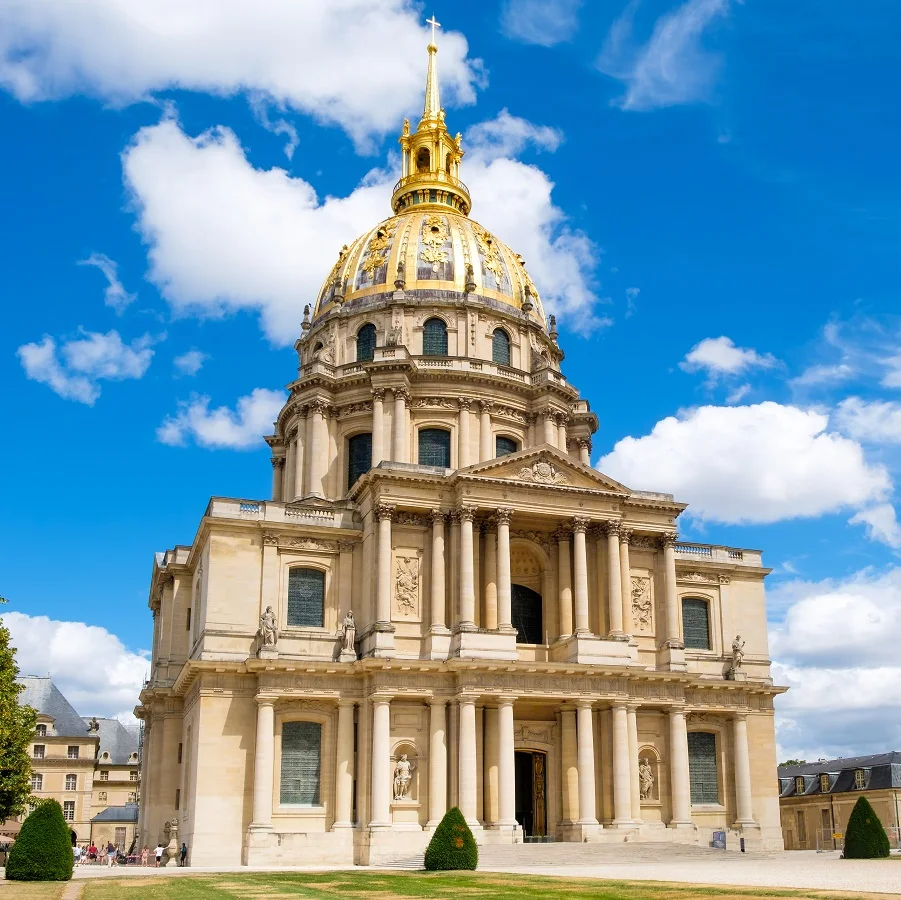
Day 1
Arrive Paris
View More
Day 1
Arrive Paris




To Be Determined
Arrival in Paris Airport & Transfer by Taxi
Upon arrival at one of Paris's Charles de Gaulle or Orly Airports, it's fairly easy to catch a taxi from outside the main terminal building to your hotel. This is cheaper than a pre-arranged private transfer, although that option is also available if you wish - just ask your consultant. Parisien taxi drivers are generally reliable and honest, but we will provide you with instructions on how to avoid possible scammers and charlatans. If you want to save money, and often quite a lot of time as well, we will also give you alternative instructions on taking public transport into the city center. Details are contained in the full itinerary and mobile app available to our travelers. If on the other hand, you are arriving at Paris's third airport, Beauvais Airport (BVA), then you should always take the shuttle bus. The taxi fare might cost more than the flight - it's nearly 50 miles (75km) outside the city.

Day 1
Arrive Paris
View More


Day 1
Arrive Paris





To Be Determined:
Airport Taxi Pick-Up
Mid-Day/Afternoon:
Hôtel des Invalides
Afternoon/Late Afternoon:
Tuileries Gardens & Nearby Museums
Early Evening:
Arc de Triomphe


Day 2
Paris
View More
Day 2
Paris




Early Morning/Morning
All You Need is Louvre - A Visit to the World's Largest Art Museum
It might be the greatest art museum in the world; it certainly is the largest with over 380,000 objects; to view every single one for even a minute apiece would take 75 days. And those descriptions still don't do the building and its collection justice. Marvel at treasures inside, including Leonardo Da Vinci's mysterious woman, the Mona Lisa, and everything from an Egyptian masterpiece of mummification to the famed Hellenistic sculpture, Venus de Milo, to patriotic French masterpieces like Delacroix’s Liberty Leading the People. Although the Louvre is vast and ever-crowded, with some strategy and a few helpful tips your visit will take in maximum artworks with minimal hassle.

Day 2
Paris
View More


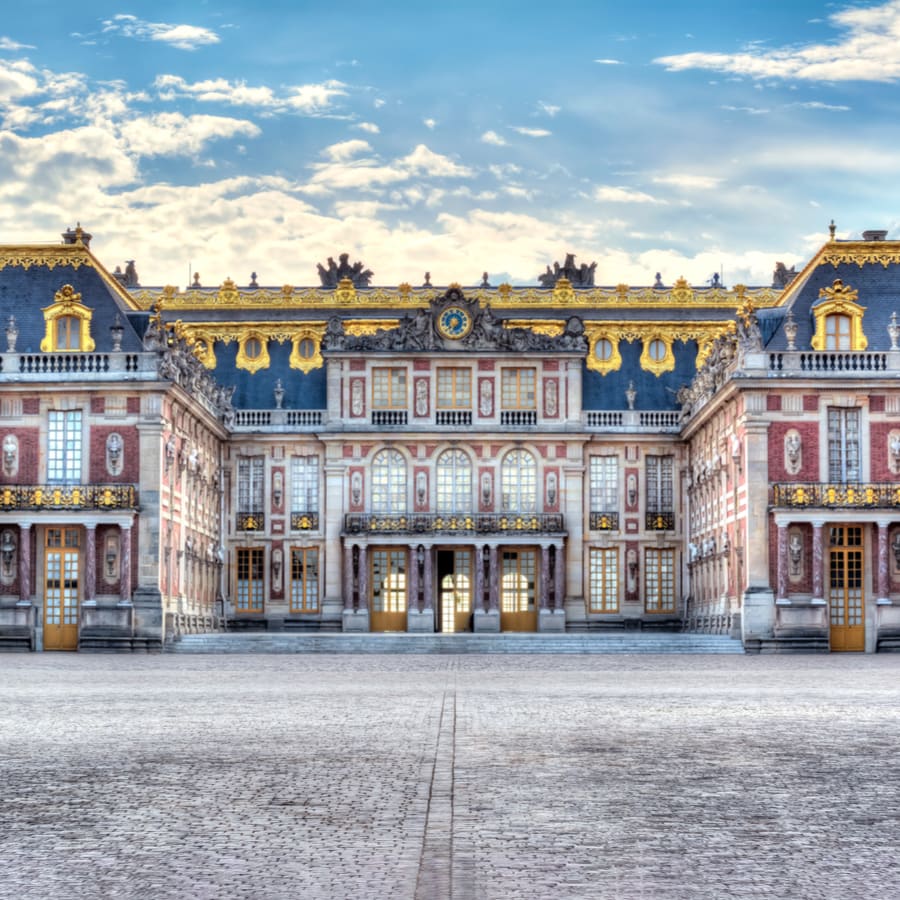
Day 3
Paris
View More
Day 3
Paris




Early Morning to Mid-Day
Grand & Grand Gardeners, Visiting the Palace of Versailles
The Château of Versailles, a symbol of the grandeur of French monarchy, invites visitors to explore its lavish history and architectural majesty. From the spellbinding elegance of the Hall of Mirrors, where the Treaty of Versailles was signed, to the vast, meticulously manicured Gardens the pinnacle of French garden design, every corner tells a story of opulence and power. Discover the intimate escapes of royalty at the Grand and Petit Trianon, and marvel at the divine beauty of the Royal Chapel, a masterpiece of Baroque architecture.

The Queen's Hamlet
Imagine living like the "peasants" here?
Show More

Parc de Versailles
Feel like a king, feel like a queen, hopefully you'll feel good looking out across the park
Show More

Main Palace of Versailles
There are palaces, and then there is Versailles...
Show More

The Queen's Hamlet
Imagine living like the "peasants" here?
Show More

Parc de Versailles
Feel like a king, feel like a queen, hopefully you'll feel good looking out across the park
Show More

Main Palace of Versailles
There are palaces, and then there is Versailles...
Show More

The Queen's Hamlet
Imagine living like the "peasants" here?
Show More
prev
next

Day 3
Paris
View More

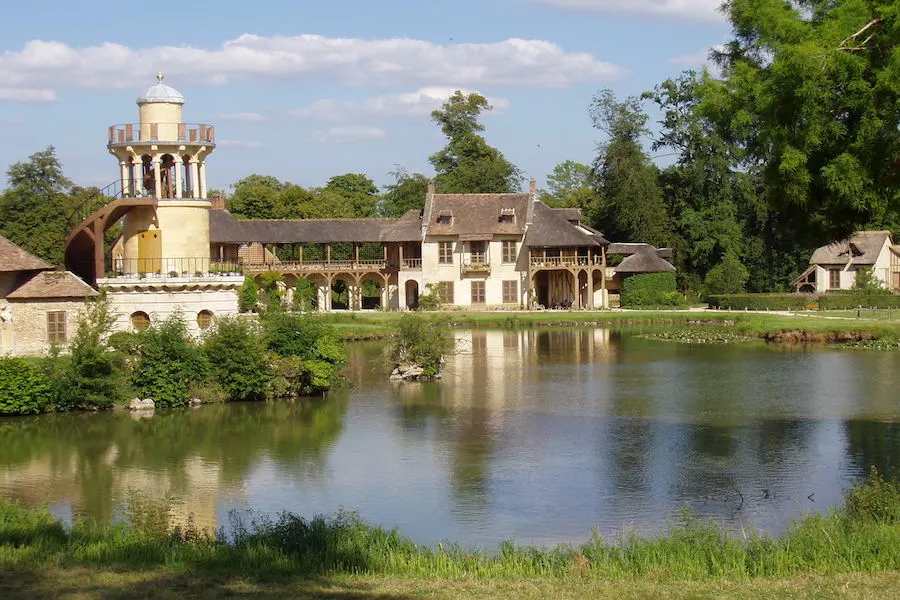
The Queen's Hamlet
 Highlight of Palace of Versailles
Highlight of Palace of VersaillesImagine living like the "peasants" here?
Desiring something different, Queen Marie Antoinette had a hamlet erected where she could supervise servants milking cows, tending pigs, collecting eggs from chickens. She dressed down to play her part, but apparently never got her hands dirty, as far as we know. Her peasant cottage only had two living rooms, a billiard room, a dining hall, and a library. If you are accustomed to palaces, only two living rooms is roughing it. Lest the queen got tired of it all, she could return to the Petit Trianon, a beautiful chateau built on the grounds of the Grand Trianon, which was the retreat chateau built on the grounds of the Palace of Versailles, which was a retreat from the Louvre Palace in Paris.
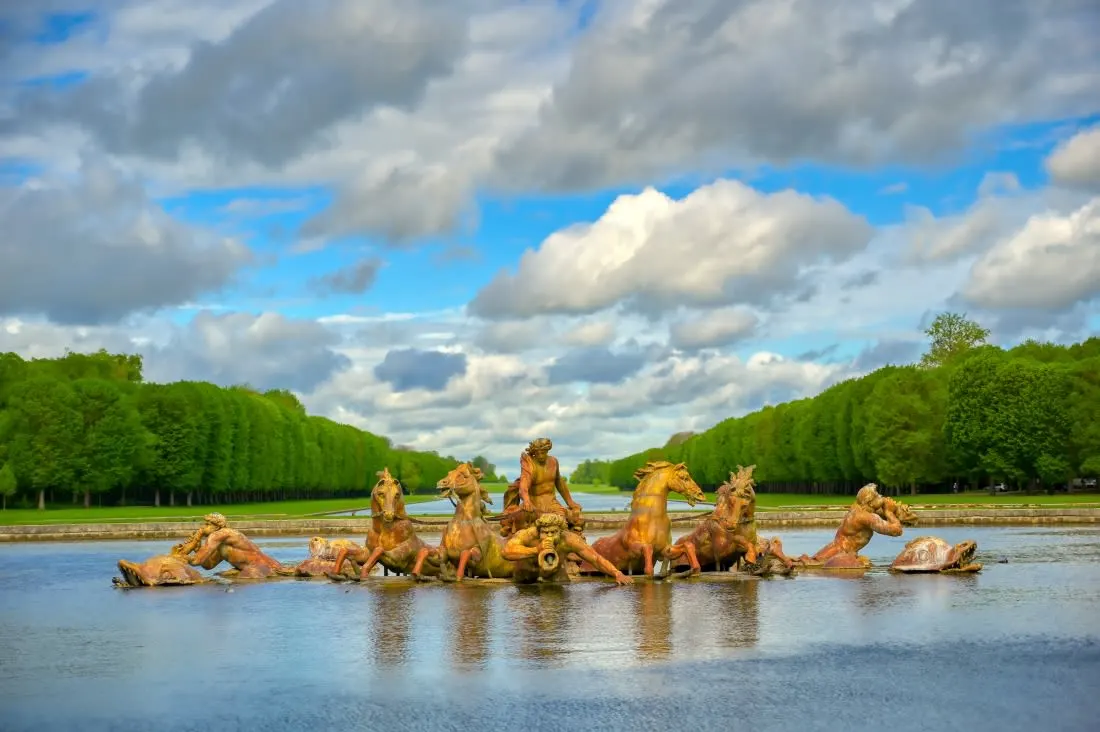
Parc de Versailles
 Highlight of Palace of Versailles
Highlight of Palace of VersaillesFeel like a king, feel like a queen, hopefully you'll feel good looking out across the park
The Parc de Versailles, features some 800 hectares of manicured lawns, stunning fountains, and the Grand Canal, all masterminded by André Le Nôtre. Highlights include the Neptune and Apollo Fountains, the Trianon Palaces, and the Queen's Hamlet. This vast garden symbolizes royal power, but you are welcomed to enjoy yourself on these pleasure grounds.
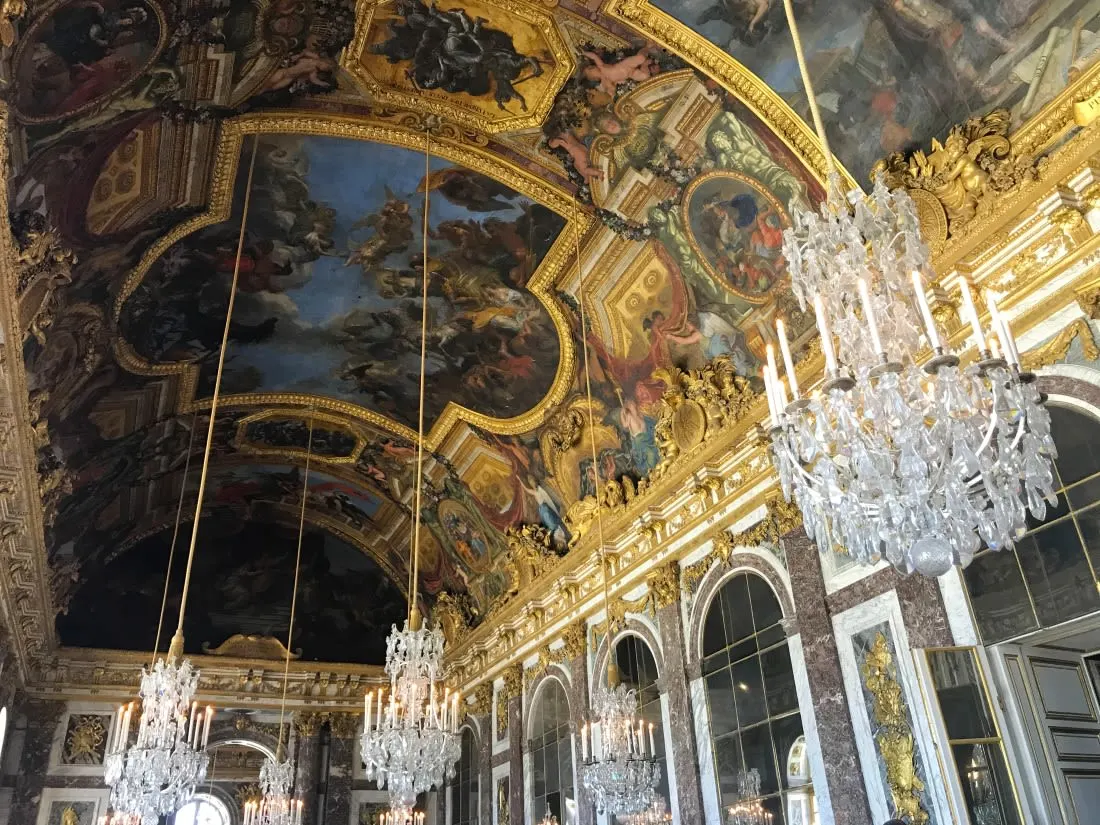
Main Palace of Versailles
 Highlight of Palace of Versailles
Highlight of Palace of VersaillesThere are palaces, and then there is Versailles...
Enlarged by for Emperor Louis XIV as an escape from the dreary political tension of Paris, Versailles might have been the most luxurious palace in the world. Even now, the building stuptifies with its grandeur and elegance, a stunning representation of the French monarchy's opulence. The famous Hall of Mirrors is just one of many, many (2300!) stunning rooms, only a small percentage of which are open for display. It might be too much, or one visit might never be enough.

The Queen's Hamlet
 Highlight of Palace of Versailles
Highlight of Palace of VersaillesImagine living like the "peasants" here?
Desiring something different, Queen Marie Antoinette had a hamlet erected where she could supervise servants milking cows, tending pigs, collecting eggs from chickens. She dressed down to play her part, but apparently never got her hands dirty, as far as we know. Her peasant cottage only had two living rooms, a billiard room, a dining hall, and a library. If you are accustomed to palaces, only two living rooms is roughing it. Lest the queen got tired of it all, she could return to the Petit Trianon, a beautiful chateau built on the grounds of the Grand Trianon, which was the retreat chateau built on the grounds of the Palace of Versailles, which was a retreat from the Louvre Palace in Paris.

Parc de Versailles
 Highlight of Palace of Versailles
Highlight of Palace of VersaillesFeel like a king, feel like a queen, hopefully you'll feel good looking out across the park
The Parc de Versailles, features some 800 hectares of manicured lawns, stunning fountains, and the Grand Canal, all masterminded by André Le Nôtre. Highlights include the Neptune and Apollo Fountains, the Trianon Palaces, and the Queen's Hamlet. This vast garden symbolizes royal power, but you are welcomed to enjoy yourself on these pleasure grounds.

Main Palace of Versailles
 Highlight of Palace of Versailles
Highlight of Palace of VersaillesThere are palaces, and then there is Versailles...
Enlarged by for Emperor Louis XIV as an escape from the dreary political tension of Paris, Versailles might have been the most luxurious palace in the world. Even now, the building stuptifies with its grandeur and elegance, a stunning representation of the French monarchy's opulence. The famous Hall of Mirrors is just one of many, many (2300!) stunning rooms, only a small percentage of which are open for display. It might be too much, or one visit might never be enough.

The Queen's Hamlet
 Highlight of Palace of Versailles
Highlight of Palace of VersaillesImagine living like the "peasants" here?
Desiring something different, Queen Marie Antoinette had a hamlet erected where she could supervise servants milking cows, tending pigs, collecting eggs from chickens. She dressed down to play her part, but apparently never got her hands dirty, as far as we know. Her peasant cottage only had two living rooms, a billiard room, a dining hall, and a library. If you are accustomed to palaces, only two living rooms is roughing it. Lest the queen got tired of it all, she could return to the Petit Trianon, a beautiful chateau built on the grounds of the Grand Trianon, which was the retreat chateau built on the grounds of the Palace of Versailles, which was a retreat from the Louvre Palace in Paris.
prev
next

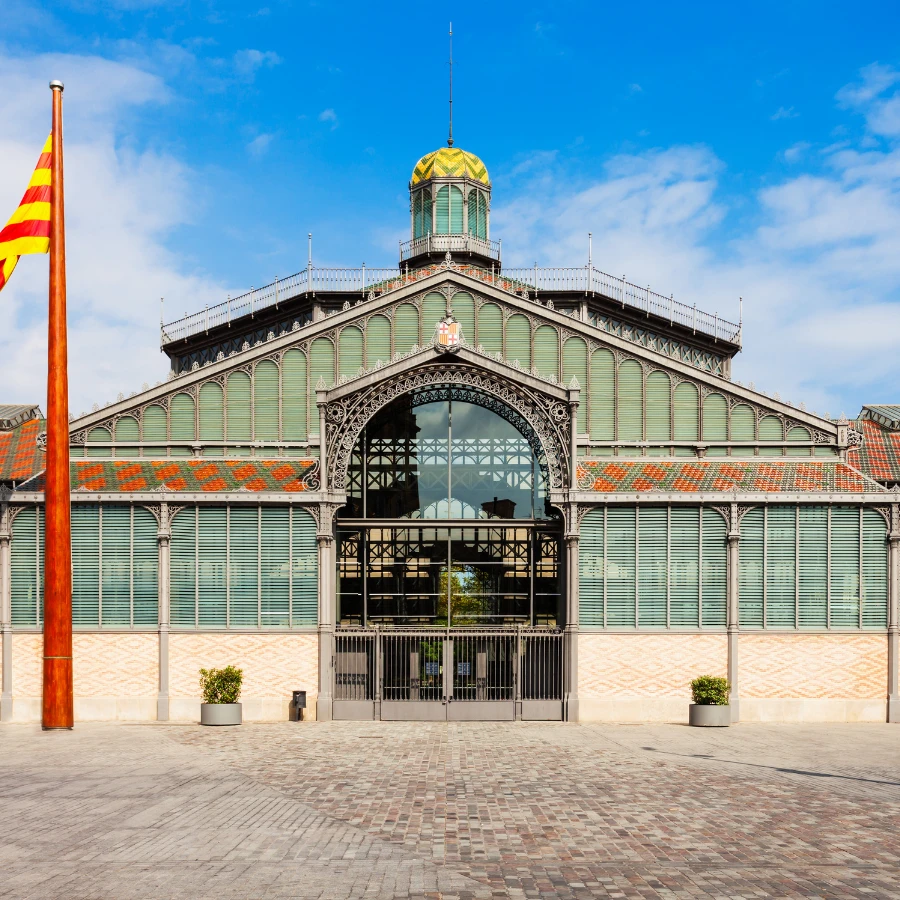
Day 4
Paris to Barcelona
View More
Day 4
Paris to Barcelona





To Be Determined
Rail Drop-Off by Taxi
Paris taxis are generally reliable and honest, so this is cheaper than a pre-arranged transfer. Parisian streets can get very congested, but if you are picked up one hour and 15 minutes prior to departure, you should have plenty of time to catch your train. Instructions for calling a taxi and finding your way around your specific rail station are included in the Full Itinerary.

Day 4
Paris to Barcelona
View More



Day 5
Barcelona
View More
Day 5
Barcelona



9:00 AM - 1:00 PM
Medieval & Modernist, the Highlights of Barcelona Tour
Discover the transformation of Barcelona from its Roman roots to a vibrant, modern metropolis, celebrated for its international flair and unique charm. Unveil the secrets of the iconic Sagrada Familia and explore the ancient Roman and medieval quarters. Experience history and architecture come alive through stories, legends, and the expert insights of an Official Barcelona Private Guide. From the majestic Plaça Nova to the historic Jewish Call, embark on a journey through time, punctuated by a delightful break with tea or coffee and churros in a classic café.

Day 5
Barcelona
View More


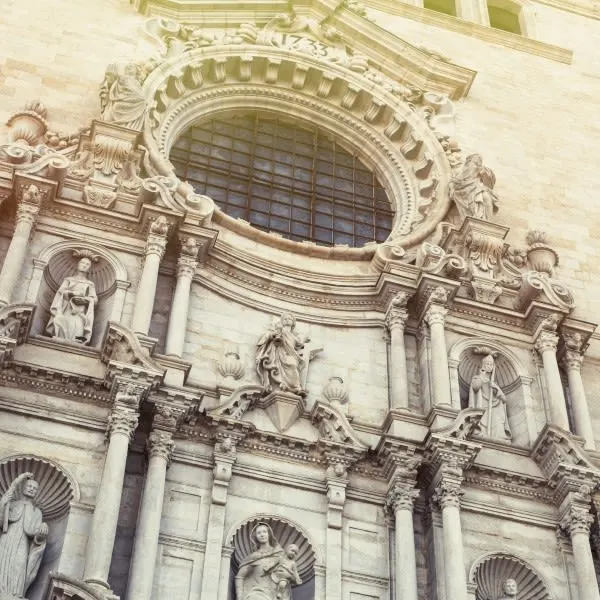
Day 6
Barcelona
View More
Day 6
Barcelona

Morning to Early Evening
Self Guided Excursion to Girona
Nestled in the heart of Catalonia, Girona is a jewel of medieval architecture and vibrant history. This charming city, just a short train ride from Barcelona, captivates visitors with its picturesque Jewish Quarter, imposing Girona Cathedral, and the colorful houses lining the Onyar River. You can spend the day exploring the city's rich history, sights, museums and ancient walls. A visit here is a step back in time amidst the backdrop of modern Catalan life.

Girona Cathedral
Marvel at the grandeur of Girona Cathedral, an architectural gem blending Romanesque, Gothic, and Baroque styles, offering breathtaking views over the city from its elevated position.
Show More

Arab Baths
Step back in time at the Arab Baths, a stunning example of medieval architecture inspired by Roman and Moorish influences.
Show More

Cases de l'Onyar
Marvel at the colorful riverfront houses of the Onyar River, a picturesque sight that captures the essence of Girona's historical charm.
Show More

Girona Cathedral
Marvel at the grandeur of Girona Cathedral, an architectural gem blending Romanesque, Gothic, and Baroque styles, offering breathtaking views over the city from its elevated position.
Show More

Arab Baths
Step back in time at the Arab Baths, a stunning example of medieval architecture inspired by Roman and Moorish influences.
Show More

Cases de l'Onyar
Marvel at the colorful riverfront houses of the Onyar River, a picturesque sight that captures the essence of Girona's historical charm.
Show More

Girona Cathedral
Marvel at the grandeur of Girona Cathedral, an architectural gem blending Romanesque, Gothic, and Baroque styles, offering breathtaking views over the city from its elevated position.
Show More
prev
next

Day 6
Barcelona
View More

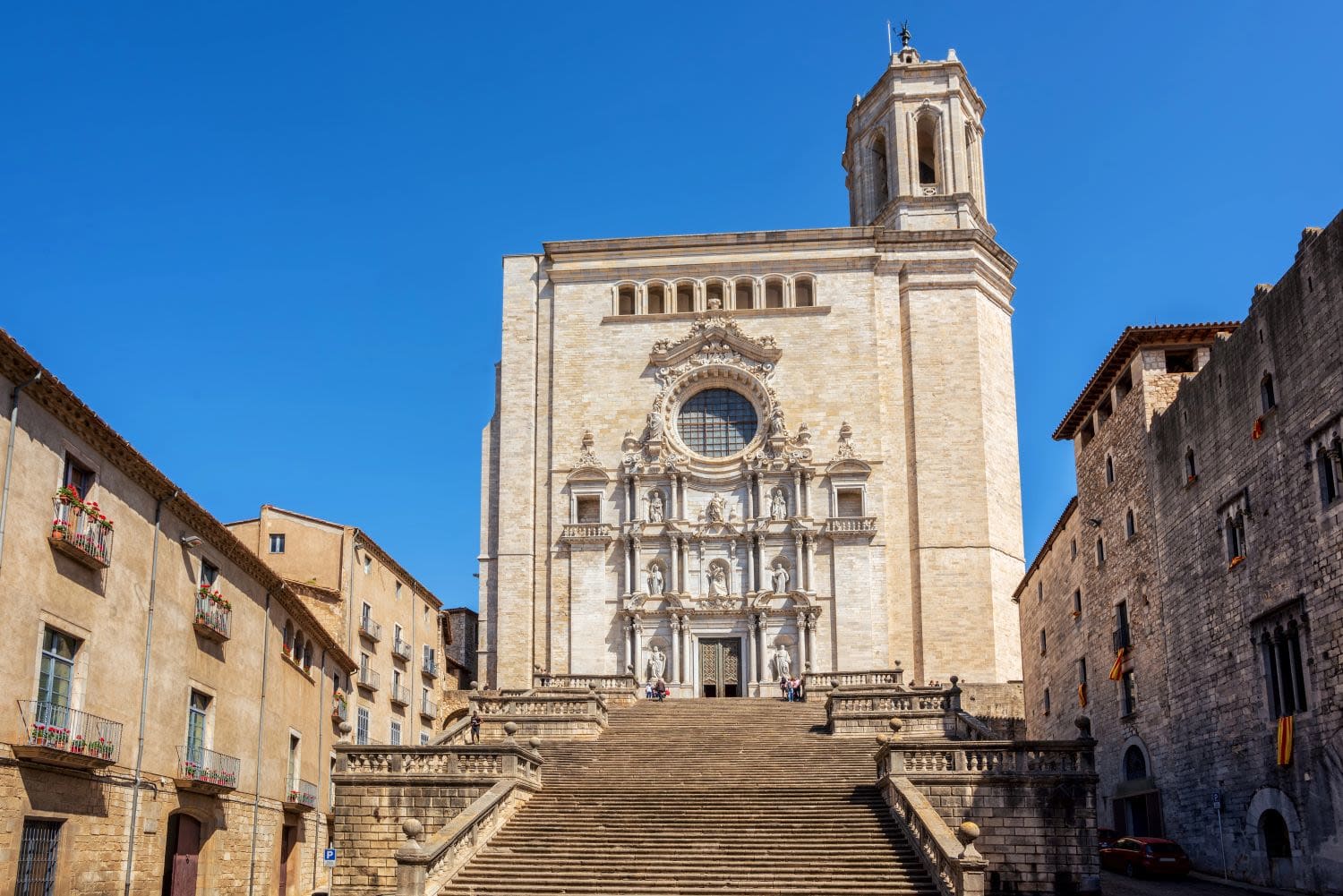
Girona Cathedral
 Highlight of Excursion to Girona
Highlight of Excursion to GironaMarvel at the grandeur of Girona Cathedral, an architectural gem blending Romanesque, Gothic, and Baroque styles, offering breathtaking views over the city from its elevated position.
Perched atop 90 steps, the Girona Cathedral, also known as the Cathedral of Saint Mary of Girona, dominates the skyline with its imposing presence. Construction began in the 11th century, and its design evolved over centuries, incorporating a unique mix of architectural styles. The cathedral boasts the widest Gothic nave in the world, a testament to the city's historical wealth and artistic ambition. Inside, visitors can admire exquisite stained glass windows, a beautifully carved altarpiece, and a collection of medieval manuscripts and artifacts. The cathedral's location provides a stunning panoramic view of Girona, making it a must-visit highlight for both its historical significance and aesthetic beauty.
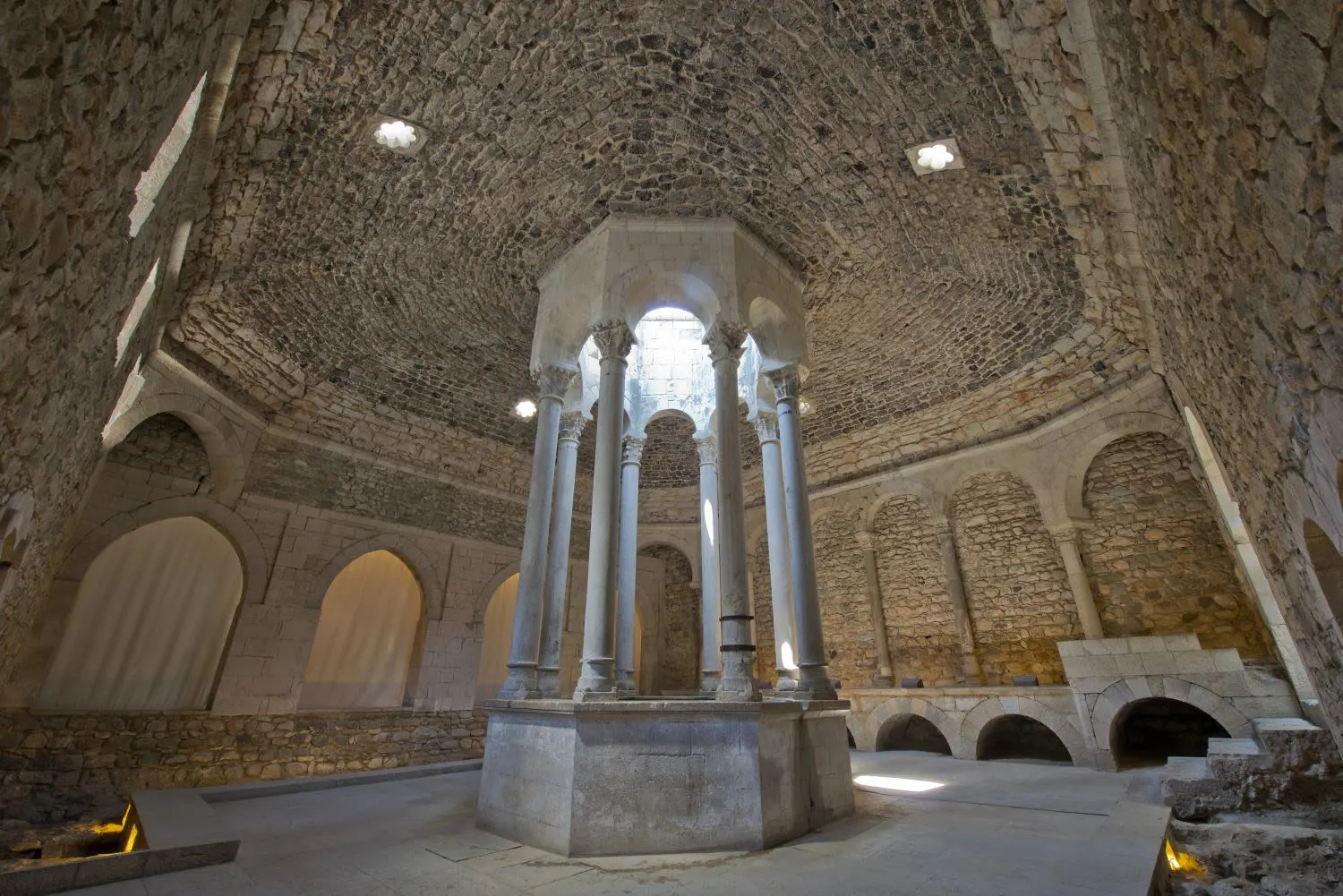
Arab Baths
 Highlight of Excursion to Girona
Highlight of Excursion to GironaStep back in time at the Arab Baths, a stunning example of medieval architecture inspired by Roman and Moorish influences.
The Arab Baths, or Banys Àrabs, in Girona are a unique blend of Roman and Moorish architectural styles, dating back to the 12th century. Originally constructed as public baths, they feature a distinct layout with a central octagonal pool, surrounded by slender columns and intricately carved arches. The baths were used for various purposes, including hygiene, relaxation, and social gatherings, reflecting the cultural influences of the time. Today, visitors can explore the well-preserved structure and admire its historical significance and architectural beauty. The serene ambiance and the detailed stonework offer a fascinating glimpse into Girona's rich past.
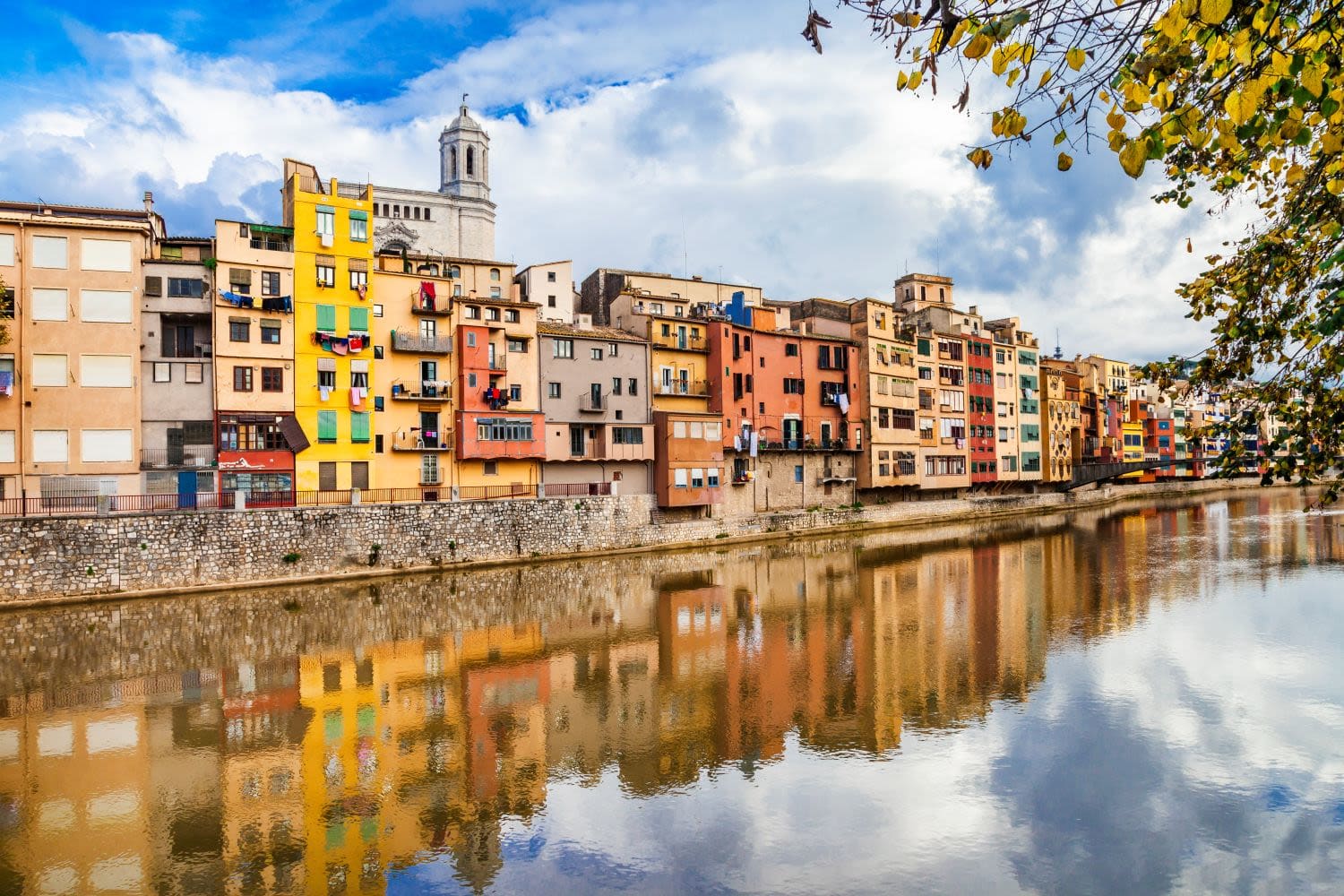
Cases de l'Onyar
 Highlight of Excursion to Girona
Highlight of Excursion to GironaMarvel at the colorful riverfront houses of the Onyar River, a picturesque sight that captures the essence of Girona's historical charm.
The Casas del Onyar are an iconic series of colorful houses that line the banks of the Onyar River in Girona, Spain. These vibrant facades, reflecting in the water, create a stunning visual spectacle that has become a symbol of the city. Dating back to medieval times, these houses have been meticulously preserved and restored, showcasing a variety of architectural styles and hues. Walking along the riverbank or crossing one of the charming pedestrian bridges, visitors can appreciate the harmonious blend of history and aesthetics. The area is not just visually appealing but also steeped in history, with each house telling a story of Girona's rich cultural heritage.

Girona Cathedral
 Highlight of Excursion to Girona
Highlight of Excursion to GironaMarvel at the grandeur of Girona Cathedral, an architectural gem blending Romanesque, Gothic, and Baroque styles, offering breathtaking views over the city from its elevated position.
Perched atop 90 steps, the Girona Cathedral, also known as the Cathedral of Saint Mary of Girona, dominates the skyline with its imposing presence. Construction began in the 11th century, and its design evolved over centuries, incorporating a unique mix of architectural styles. The cathedral boasts the widest Gothic nave in the world, a testament to the city's historical wealth and artistic ambition. Inside, visitors can admire exquisite stained glass windows, a beautifully carved altarpiece, and a collection of medieval manuscripts and artifacts. The cathedral's location provides a stunning panoramic view of Girona, making it a must-visit highlight for both its historical significance and aesthetic beauty.

Arab Baths
 Highlight of Excursion to Girona
Highlight of Excursion to GironaStep back in time at the Arab Baths, a stunning example of medieval architecture inspired by Roman and Moorish influences.
The Arab Baths, or Banys Àrabs, in Girona are a unique blend of Roman and Moorish architectural styles, dating back to the 12th century. Originally constructed as public baths, they feature a distinct layout with a central octagonal pool, surrounded by slender columns and intricately carved arches. The baths were used for various purposes, including hygiene, relaxation, and social gatherings, reflecting the cultural influences of the time. Today, visitors can explore the well-preserved structure and admire its historical significance and architectural beauty. The serene ambiance and the detailed stonework offer a fascinating glimpse into Girona's rich past.

Cases de l'Onyar
 Highlight of Excursion to Girona
Highlight of Excursion to GironaMarvel at the colorful riverfront houses of the Onyar River, a picturesque sight that captures the essence of Girona's historical charm.
The Casas del Onyar are an iconic series of colorful houses that line the banks of the Onyar River in Girona, Spain. These vibrant facades, reflecting in the water, create a stunning visual spectacle that has become a symbol of the city. Dating back to medieval times, these houses have been meticulously preserved and restored, showcasing a variety of architectural styles and hues. Walking along the riverbank or crossing one of the charming pedestrian bridges, visitors can appreciate the harmonious blend of history and aesthetics. The area is not just visually appealing but also steeped in history, with each house telling a story of Girona's rich cultural heritage.

Girona Cathedral
 Highlight of Excursion to Girona
Highlight of Excursion to GironaMarvel at the grandeur of Girona Cathedral, an architectural gem blending Romanesque, Gothic, and Baroque styles, offering breathtaking views over the city from its elevated position.
Perched atop 90 steps, the Girona Cathedral, also known as the Cathedral of Saint Mary of Girona, dominates the skyline with its imposing presence. Construction began in the 11th century, and its design evolved over centuries, incorporating a unique mix of architectural styles. The cathedral boasts the widest Gothic nave in the world, a testament to the city's historical wealth and artistic ambition. Inside, visitors can admire exquisite stained glass windows, a beautifully carved altarpiece, and a collection of medieval manuscripts and artifacts. The cathedral's location provides a stunning panoramic view of Girona, making it a must-visit highlight for both its historical significance and aesthetic beauty.
prev
next

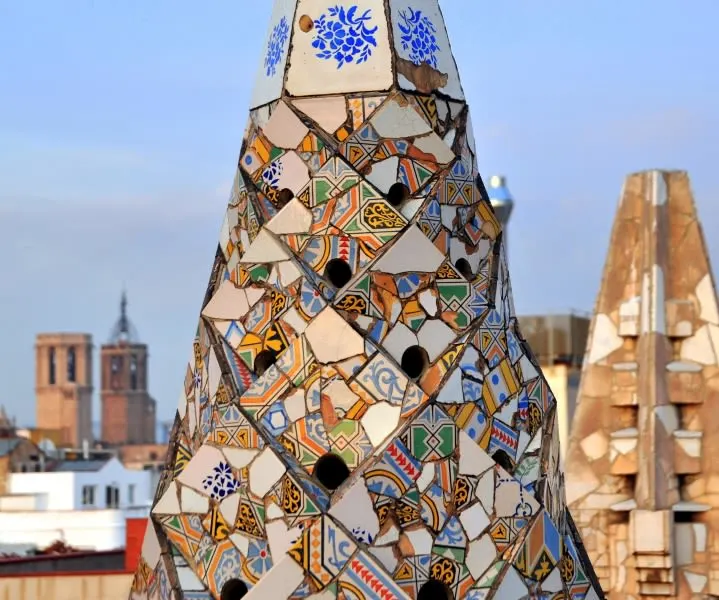
Day 7
Barcelona to Madrid
View More
Day 7
Barcelona to Madrid





Early Morning/Morning
Charming Neighborhood of Gràcia & Parc Güell
Gràcia, once an independent town before being enveloped by the expanding city of Barcelona, retains a distinct, village-like ambiance that sets it apart from the busier tourist areas. This neighborhood is rich in artistic flair and community spirit, making it a favorite among locals and those seeking a more authentic experience. Key attractions include the iconic Park Güell, one of Antoni Gaudí's most whimsical creations, offering stunning views and vibrant ceramic artworks.

Day 7
Barcelona to Madrid
View More



Day 8
Madrid
View More
Day 8
Madrid




9:30 AM - 12:30 PM
Highlights of Madrid Private Walking Tour
Immerse yourself in the heart of Spanish history with a captivating 3-hour walking tour in Madrid, focusing on the majestic Royal Palace (exterior) and the bustling Plaza Mayor. At the Royal Palace, you will learn how the Habsburg Empire came to Spain, grew to cover the New World, and then discovered that the Iberian peninsula was enough land. Then, meander toward the vibrant Plaza Mayor, a grand square framed by historic buildings, lively cafes, and street performers. Among the frescos of these Baroque buildings you'll hear Madrid's history, the good and the bad, the everyday and the dramatic. Through it all, you will have the chance to see and hear the buzz of life the proceeds from Spain's capital!

Day 8
Madrid
View More


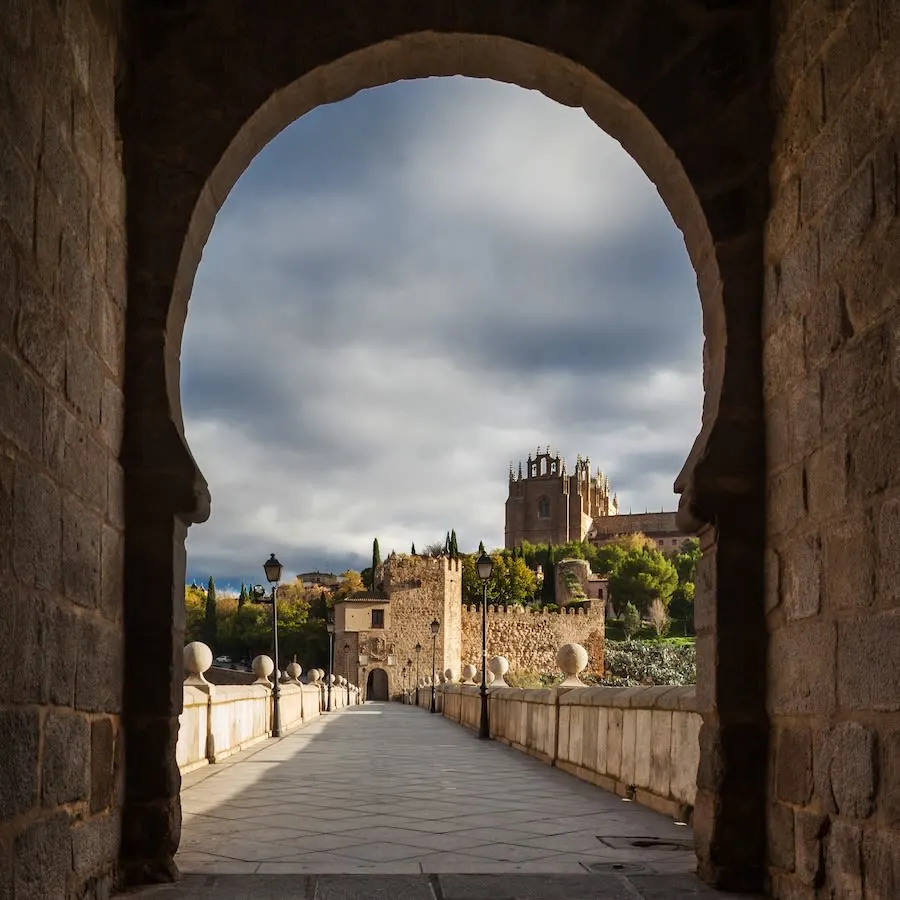
Day 9
Madrid
View More
Day 9
Madrid


Early Morning to Afternoon
Self-Guided Excursion to Majestic Toledo
Toledo, a city of majestic history and cultural diversity, offers an unparalleled journey back in time. With its well-preserved medieval architecture, including the grand Toledo Cathedral, the historic Alcázar, and the serene Synagogue of Santa María la Blanca, visitors are transported to a bygone era. The Monastery of San Juan de los Reyes and the picturesque Puente de San Martín further accentuate the city's rich historical tapestry. Beyond its historical significance, Toledo's narrow, winding streets and the stunning views over the Tagus River capture the essence of Spanish beauty. This day trip is essential to experience Spain's multifaceted heritage, offering a perfect blend of architectural marvels, religious significance, and breathtaking landscapes. Included: Roundtrip high-speed rail tickets to Lisbon

Toledo Cathedral
Marvel at the grandiosity of this Cathedral, and listen quietly to discover a 6th-century rite of ancient Christianity.
Show More

El Greco Museum
Wander past the long, sometimes eerie, figures the draw us into a mystical past.
Show More

Cristo de la Luz Mosque
There's a lot of history here, some of it contentious.
Show More

Alcázar of Toledo
Follow the Romans, Visigoths, and Moors to the historic fortress of Toledo.
Show More

Synagogue of Santa María la Blanca
Explore the serene and unusual Synagogue of Santa María la Blanca.
Show More

Monastery of San Juan de los Reyes
Walk the hallowed cloisters of the Monastery of San Juan de los Reyes.
Show More

Toledo Cathedral
Marvel at the grandiosity of this Cathedral, and listen quietly to discover a 6th-century rite of ancient Christianity.
Show More

El Greco Museum
Wander past the long, sometimes eerie, figures the draw us into a mystical past.
Show More

Cristo de la Luz Mosque
There's a lot of history here, some of it contentious.
Show More

Alcázar of Toledo
Follow the Romans, Visigoths, and Moors to the historic fortress of Toledo.
Show More

Synagogue of Santa María la Blanca
Explore the serene and unusual Synagogue of Santa María la Blanca.
Show More

Monastery of San Juan de los Reyes
Walk the hallowed cloisters of the Monastery of San Juan de los Reyes.
Show More
prev
next

Day 9
Madrid
View More

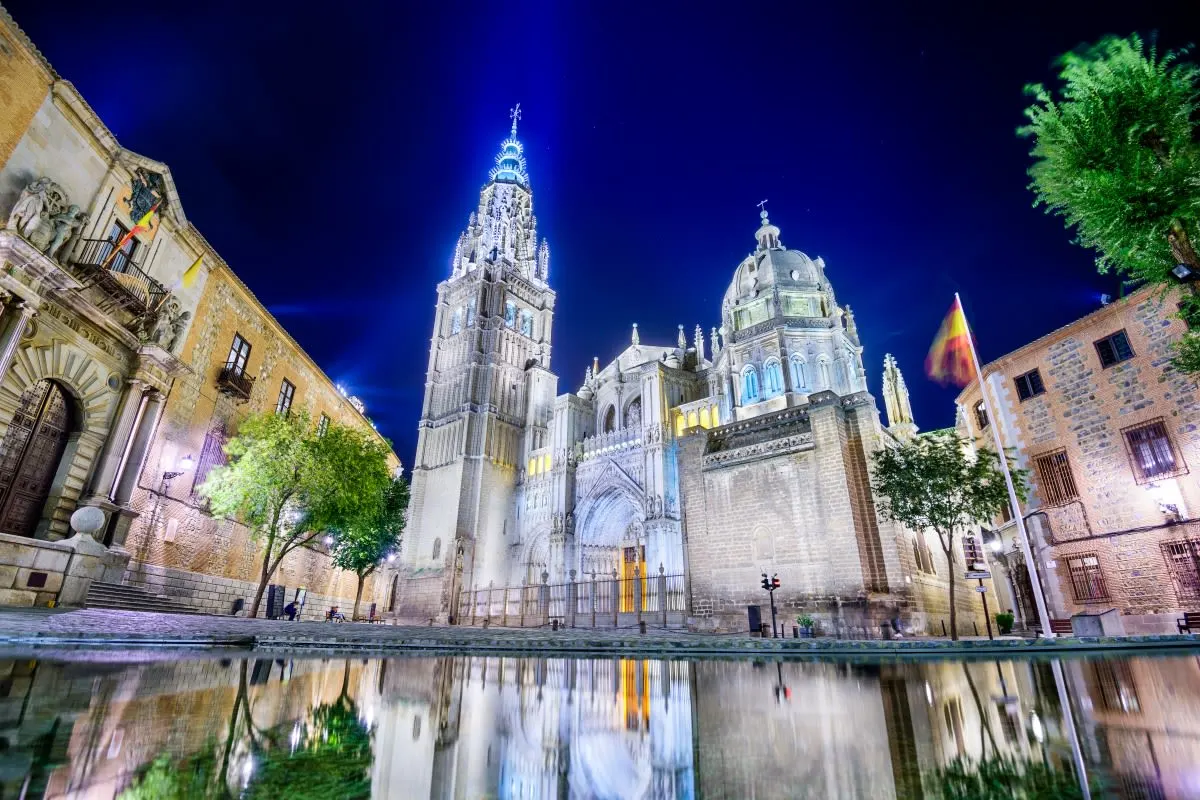
Toledo Cathedral
 Highlight of Excursion to Toledo
Highlight of Excursion to Toledo Marvel at the grandiosity of this Cathedral, and listen quietly to discover a 6th-century rite of ancient Christianity.
While the Cathedral of Toledo contains many architectural styles, ranging from Romanesque and Gothic through early Baroque, contains artistic treasures like El Transparente and paintings from the likes of Velásquez, Goya, and El Greco, its greatest curiosity might be the celebration of the ancient Mozarabic rite and traditions. The songs and chants of this rite hearken back to the controversies and challenges not of the 1950s, nor the 1550s, but the 550s. All that turmoil makes for some serious beauty now...

El Greco Museum
 Highlight of Excursion to Toledo
Highlight of Excursion to Toledo Wander past the long, sometimes eerie, figures the draw us into a mystical past.
Dedicated to Domenikos Theotokopoulos, better known as El Greco, this museum explores the masterpainter who spent much of his working life in this historic city. Located in the Jewish Quarter in a house inaccurately purported to have been his home, the museum replicates the atmosphere of the period and showcases an extensive collection of his paintings. Opened in 1911, the museum aims to celebrate El Greco's unique style, characterized by elongated figures and vibrant colors. Highlights include some of his most famous works that reflect his deep religious sentiment and innovative approach to Mannerism.
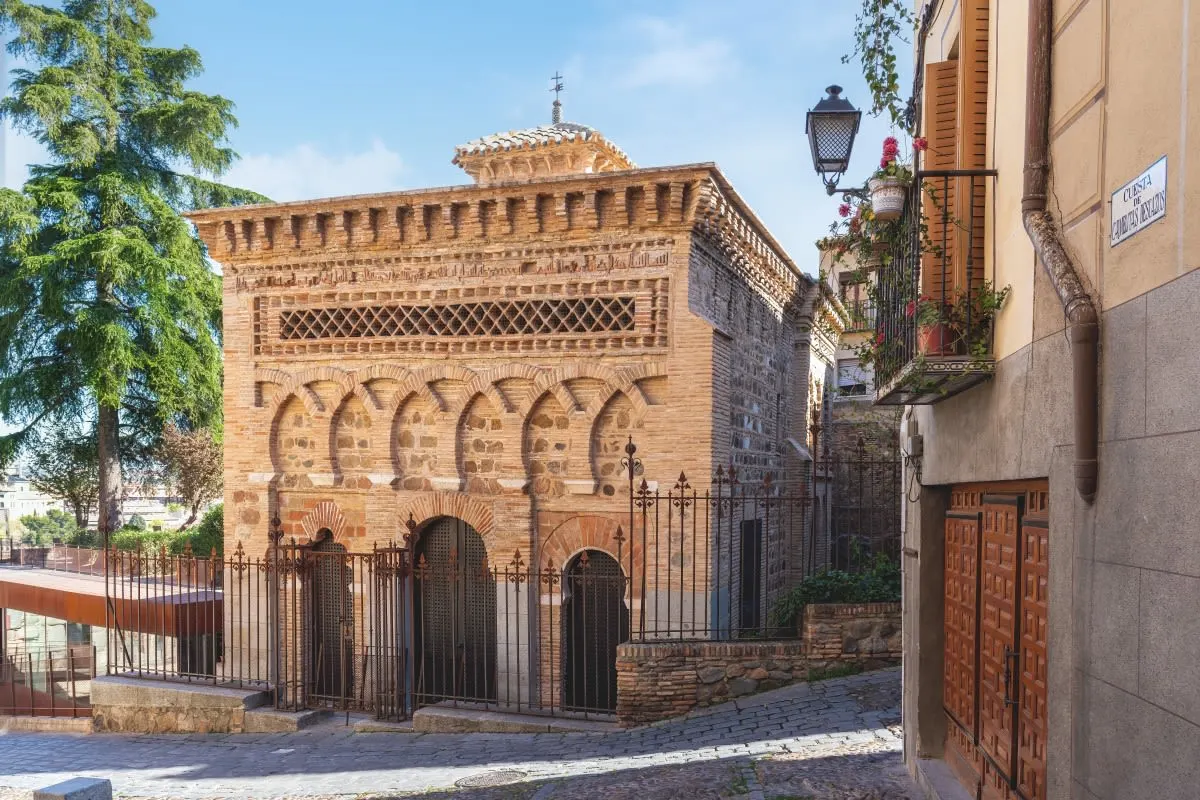
Cristo de la Luz Mosque
 Highlight of Excursion to Toledo
Highlight of Excursion to Toledo There's a lot of history here, some of it contentious.
The Cristo de la Luz Mosque in Toledo, originally named Bab al-Mardum Mosque, is a rare architectural relic dating back to the year 999, during the reign of Moorish Caliph Abd ar-Rahman III. This small but significant building is one of the ten that survive from the Moorish period in the city. Remarkably well-preserved, it showcases the blend of Visigothic and Islamic architectural styles that are unique to Spain. Under the 12th-century apse, it even retains some Christian carvings from the 3rd century. After the Christian reconquest of Toledo in the 12th century, the mosque was converted into a church, but it retained its original Islamic brickwork, arches, and geometric decoration. Today, the church-turned-mosque-turneded-church serves as a museum.
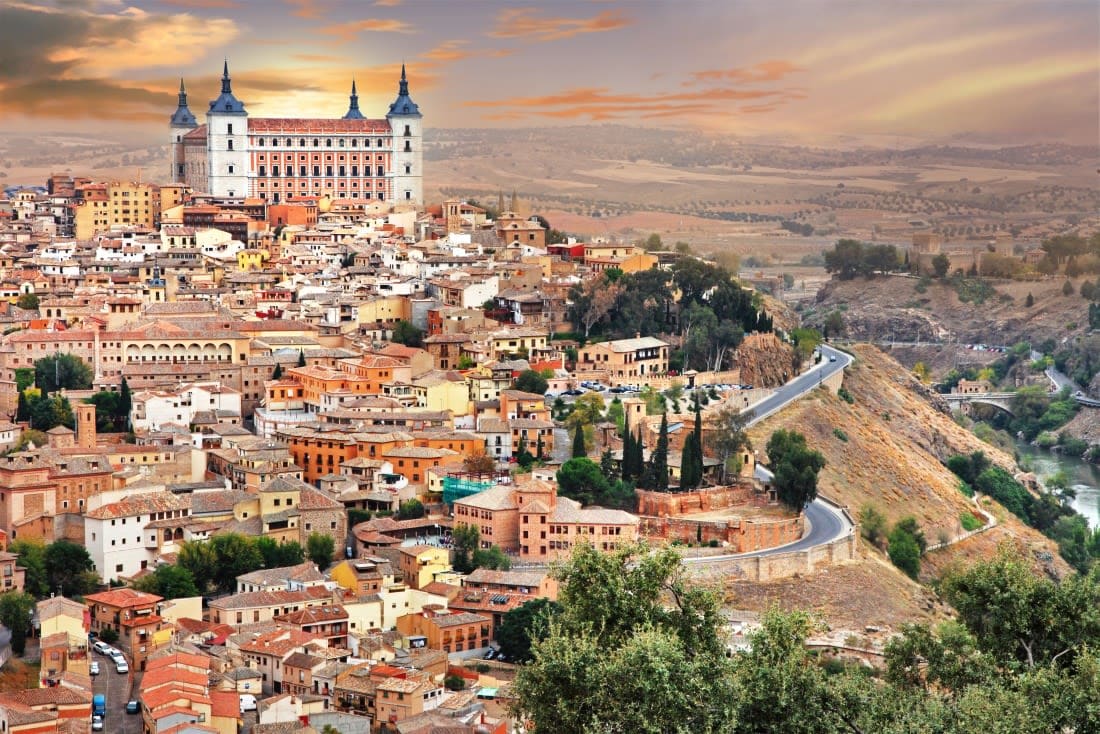
Alcázar of Toledo
 Highlight of Excursion to Toledo
Highlight of Excursion to Toledo Follow the Romans, Visigoths, and Moors to the historic fortress of Toledo.
The Alcázar of Toledo is a historic fortress that dominates the city's skyline. Originating as a Roman palace in the 3rd century, it was transformed through the centuries by Visigoths, Moors, and Christians into the imposing structure seen today. Reconstructed under Charles V in the 16th century with a Renaissance flair, the Alcázar's strategic location offers panoramic views over Toledo and its surrounding landscape, making its military usefulness clear. After withstanding a prolonged siege in the Spanish Civil War by Republican forces, Spain's Nationalist dictator Franco decided to house the Army Museum within the fortress. Today the museum's exhibits span the breadth of Spanish military history, from ancient weapons to modern-day peacekeeping missions.
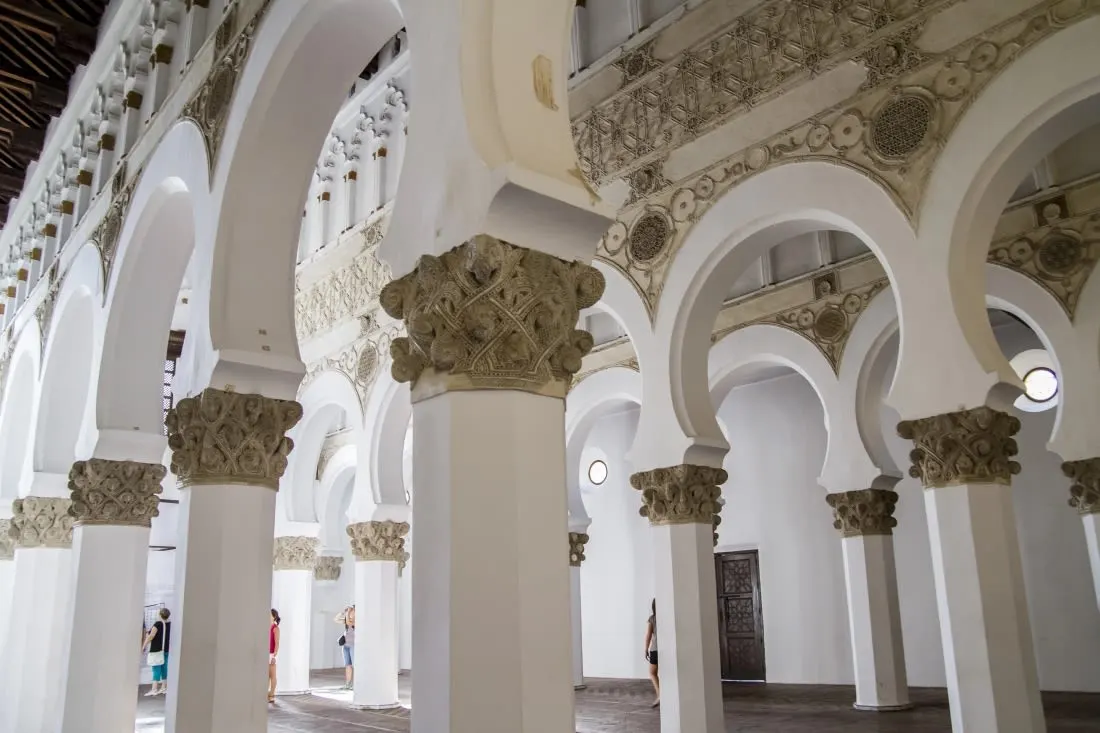
Synagogue of Santa María la Blanca
 Highlight of Excursion to Toledo
Highlight of Excursion to Toledo Explore the serene and unusual Synagogue of Santa María la Blanca.
The Synagogue of Santa María la Blanca stands as a rare example of Mudejar architecture, the unique and beautiful style of building that resulted from the mixing of Jewish, Islamic, and Christian building styles. It was seized from the Jewish community and converted into a church in the later Middle Ages, and as a result you have the unusual opportunity to visit a building known simultaneously as a synagogue and by the name of a Christian saint. It is also unusual in that the stark white horseshoe arches and tranquil atmosphere are set in an atypical floorplan, which is divided into five aisles with the central nave aisle being only slightly larger than the others. The former synagogue thus encapsulates a unique blend of cultural, architectural, and religious histories within its walls.
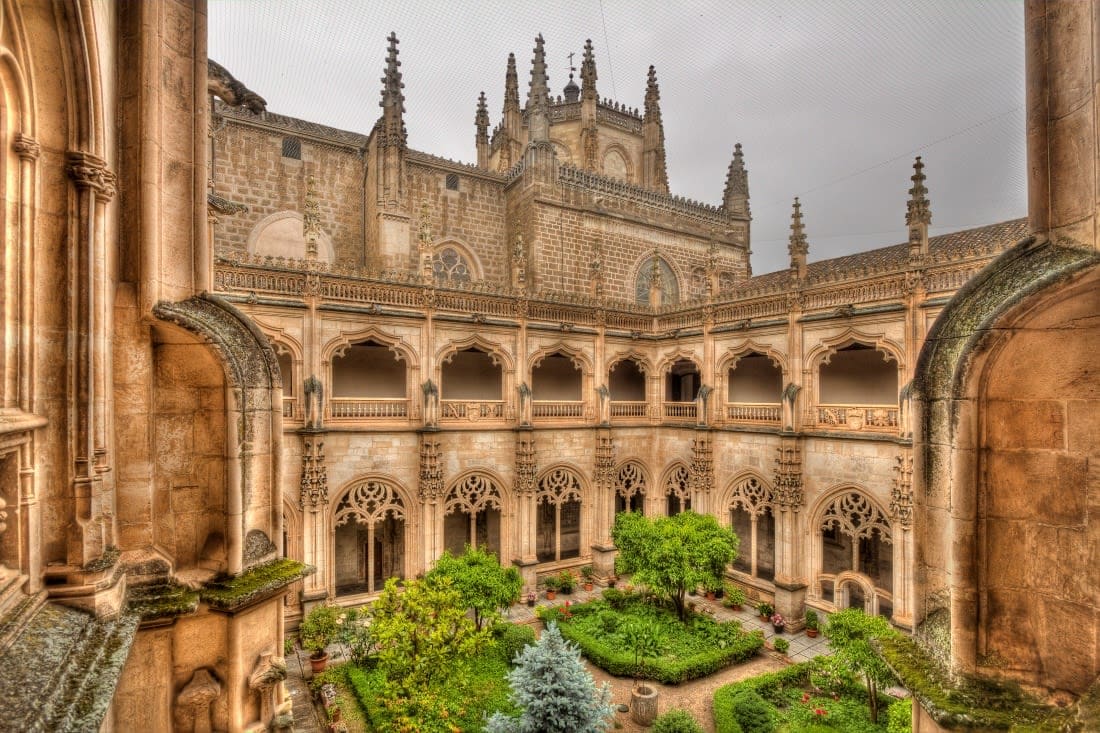
Monastery of San Juan de los Reyes
 Highlight of Excursion to Toledo
Highlight of Excursion to Toledo Walk the hallowed cloisters of the Monastery of San Juan de los Reyes.
This 15th century monastery is a masterpiece of late Gothic style. It was commissioned by Isabella I and her husband Ferdinand II (the monarchs who sent Columbus to the New World), who wished to commemorate their victory at Toro where they consolidated their rule over Spain. Its elaborate stonework and cloisters offer many pleasant surprises, while the church's altarpiece, choir, and sacristy are richly decorated, housing important works of art, including paintings, sculptures, and gold work. The gardens, meanwhile, offer a tranquil space to relax and contemplate the beauty of the setting. Also interesting to note that are chains hanging from the walls of the monastery. They came from Christian slaves who were rescued from captivity in Muslim territories, primarily in North Africa, and are a reminder of often forgotten but quite significant chapter in Spanish history. Hundreds of thousands of Spaniards were enslaved in Northern Africa.

Toledo Cathedral
 Highlight of Excursion to Toledo
Highlight of Excursion to Toledo Marvel at the grandiosity of this Cathedral, and listen quietly to discover a 6th-century rite of ancient Christianity.
While the Cathedral of Toledo contains many architectural styles, ranging from Romanesque and Gothic through early Baroque, contains artistic treasures like El Transparente and paintings from the likes of Velásquez, Goya, and El Greco, its greatest curiosity might be the celebration of the ancient Mozarabic rite and traditions. The songs and chants of this rite hearken back to the controversies and challenges not of the 1950s, nor the 1550s, but the 550s. All that turmoil makes for some serious beauty now...

El Greco Museum
 Highlight of Excursion to Toledo
Highlight of Excursion to Toledo Wander past the long, sometimes eerie, figures the draw us into a mystical past.
Dedicated to Domenikos Theotokopoulos, better known as El Greco, this museum explores the masterpainter who spent much of his working life in this historic city. Located in the Jewish Quarter in a house inaccurately purported to have been his home, the museum replicates the atmosphere of the period and showcases an extensive collection of his paintings. Opened in 1911, the museum aims to celebrate El Greco's unique style, characterized by elongated figures and vibrant colors. Highlights include some of his most famous works that reflect his deep religious sentiment and innovative approach to Mannerism.

Cristo de la Luz Mosque
 Highlight of Excursion to Toledo
Highlight of Excursion to Toledo There's a lot of history here, some of it contentious.
The Cristo de la Luz Mosque in Toledo, originally named Bab al-Mardum Mosque, is a rare architectural relic dating back to the year 999, during the reign of Moorish Caliph Abd ar-Rahman III. This small but significant building is one of the ten that survive from the Moorish period in the city. Remarkably well-preserved, it showcases the blend of Visigothic and Islamic architectural styles that are unique to Spain. Under the 12th-century apse, it even retains some Christian carvings from the 3rd century. After the Christian reconquest of Toledo in the 12th century, the mosque was converted into a church, but it retained its original Islamic brickwork, arches, and geometric decoration. Today, the church-turned-mosque-turneded-church serves as a museum.

Alcázar of Toledo
 Highlight of Excursion to Toledo
Highlight of Excursion to Toledo Follow the Romans, Visigoths, and Moors to the historic fortress of Toledo.
The Alcázar of Toledo is a historic fortress that dominates the city's skyline. Originating as a Roman palace in the 3rd century, it was transformed through the centuries by Visigoths, Moors, and Christians into the imposing structure seen today. Reconstructed under Charles V in the 16th century with a Renaissance flair, the Alcázar's strategic location offers panoramic views over Toledo and its surrounding landscape, making its military usefulness clear. After withstanding a prolonged siege in the Spanish Civil War by Republican forces, Spain's Nationalist dictator Franco decided to house the Army Museum within the fortress. Today the museum's exhibits span the breadth of Spanish military history, from ancient weapons to modern-day peacekeeping missions.

Synagogue of Santa María la Blanca
 Highlight of Excursion to Toledo
Highlight of Excursion to Toledo Explore the serene and unusual Synagogue of Santa María la Blanca.
The Synagogue of Santa María la Blanca stands as a rare example of Mudejar architecture, the unique and beautiful style of building that resulted from the mixing of Jewish, Islamic, and Christian building styles. It was seized from the Jewish community and converted into a church in the later Middle Ages, and as a result you have the unusual opportunity to visit a building known simultaneously as a synagogue and by the name of a Christian saint. It is also unusual in that the stark white horseshoe arches and tranquil atmosphere are set in an atypical floorplan, which is divided into five aisles with the central nave aisle being only slightly larger than the others. The former synagogue thus encapsulates a unique blend of cultural, architectural, and religious histories within its walls.

Monastery of San Juan de los Reyes
 Highlight of Excursion to Toledo
Highlight of Excursion to Toledo Walk the hallowed cloisters of the Monastery of San Juan de los Reyes.
This 15th century monastery is a masterpiece of late Gothic style. It was commissioned by Isabella I and her husband Ferdinand II (the monarchs who sent Columbus to the New World), who wished to commemorate their victory at Toro where they consolidated their rule over Spain. Its elaborate stonework and cloisters offer many pleasant surprises, while the church's altarpiece, choir, and sacristy are richly decorated, housing important works of art, including paintings, sculptures, and gold work. The gardens, meanwhile, offer a tranquil space to relax and contemplate the beauty of the setting. Also interesting to note that are chains hanging from the walls of the monastery. They came from Christian slaves who were rescued from captivity in Muslim territories, primarily in North Africa, and are a reminder of often forgotten but quite significant chapter in Spanish history. Hundreds of thousands of Spaniards were enslaved in Northern Africa.
prev
next

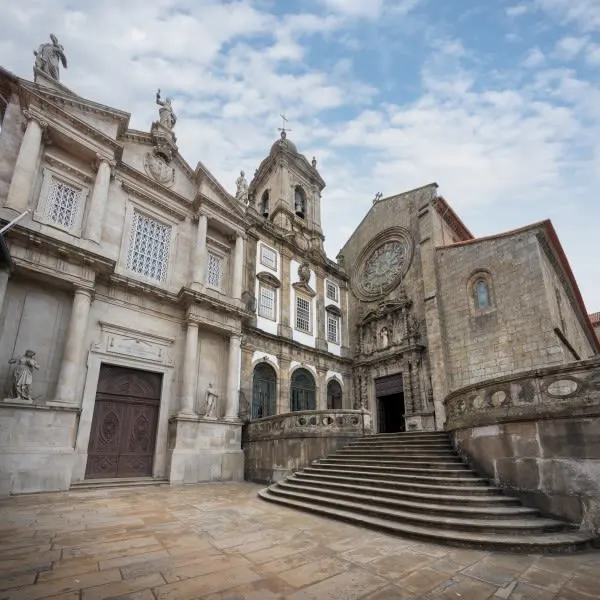
Day 10
Madrid to Porto
View More
Day 10
Madrid to Porto




To Be Determined
Transfer to Airport by Taxi
Madrid has one main airport, Madrid-Barajas Airport. Taxis can provide a relatively inexpensive trip to the airport, and your hotel can arrange a reliable taxi for you. Depending on you hotel's location and time of day, an taxi ride may take as little as 20 minutes or over 50 minutes. If you are picked up about three hours before your departure time, you should arrive at the airport with about two hours to spare, depending on traffic. If you are leaving during rush hour, you may want to budget an extra fifteen to thirty minutes. You can also call an Uber or Bolt taxi from your smart phone if you have the app downloaded.

Day 10
Madrid to Porto
View More


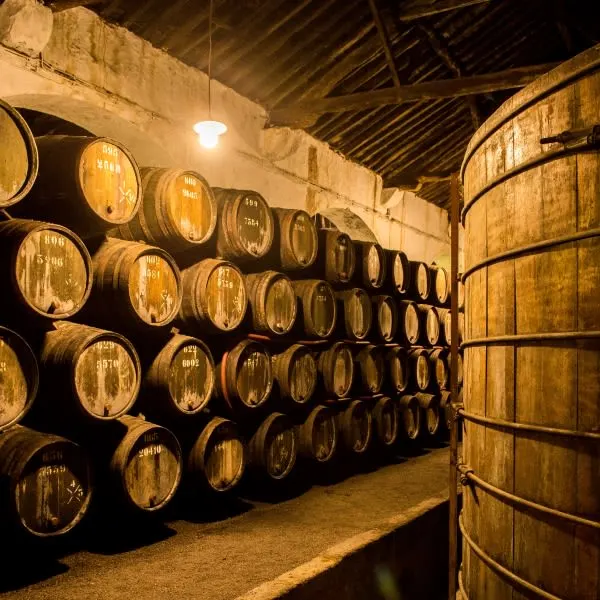
Day 11
Porto
View More
Day 11
Porto



9:00 AM - 1:00 PM
Highlights of Porto Private Guided Walking Tour
Enjoy a 4 hour private guided tour of Porto, Capital of Northern Portugal and UNESCO World Heritage. Everything in this wonderful city makes this tour a memorable trip, from the Cathedral to the Port Wine Cellars, where you can enjoy two wine tastings. You will have the opportunity to discover also about Portuguese tradition and culture and important references will be given about the streets and squares of the historic centre.

Day 11
Porto
View More


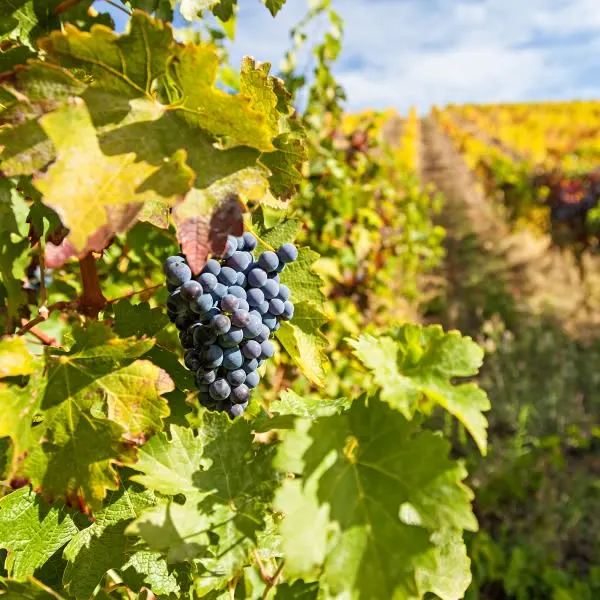
Day 12
Porto to Lisbon
View More
Day 12
Porto to Lisbon




Early Morning to Late Afternoon
Self-Guided Excursion by Train to the Douro River Valley (MVP)
Travel through the stunning depths of the UNESCO-protected Douro River Valley, and discover the wines of royalty. Taking a train from Porto through the Douro River Valley is an unforgettable journey that reveals some of Portugal's most stunning landscapes. As the train winds along the river, passengers are treated to panoramic views of terraced vineyards climbing steep hillsides, traditional quintas (wine estates), and quaint villages that dot the riverbank. This scenic railway route is often considered one of the most beautiful in Europe, offering a peaceful and picturesque way to experience the heart of Portugal's famous wine country. Along the way, the train passes through historic towns and stops at various points, allowing travelers the opportunity to explore the regional culture, cuisine, and, of course, sample the region's renowned wines. Many people say, "It's about the journey, not the destination." Not here. Here the journey and destination are rolled into one on the rails connecting Porto to Pinhão.

Pinhão
Enter this village built between river and mountain, and enjoy a walk and meal among the vines.
Show More

Douro Museum
This Museum proudly communicates the history of the Douro, and of course, port wine.
Show More

Pinhão
Enter this village built between river and mountain, and enjoy a walk and meal among the vines.
Show More

Douro Museum
This Museum proudly communicates the history of the Douro, and of course, port wine.
Show More

Pinhão
Enter this village built between river and mountain, and enjoy a walk and meal among the vines.
Show More

Douro Museum
This Museum proudly communicates the history of the Douro, and of course, port wine.
Show More
prev
next

Day 12
Porto to Lisbon
View More

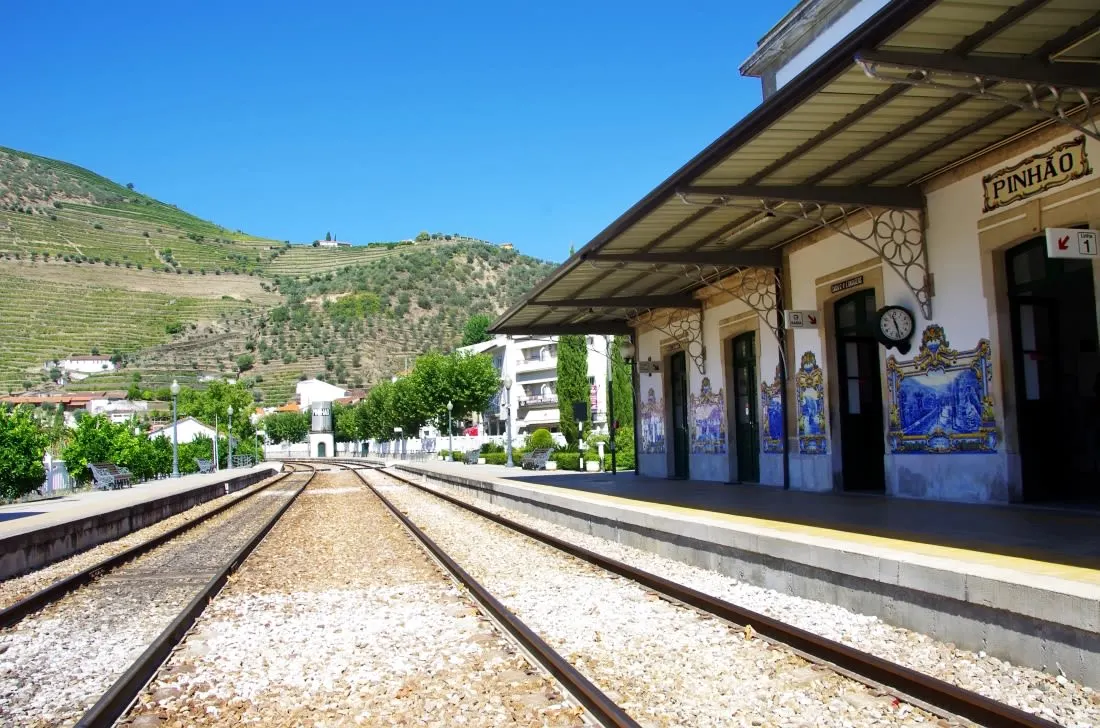
Pinhão
 Highlight of Douro River Excursion
Highlight of Douro River ExcursionEnter this village built between river and mountain, and enjoy a walk and meal among the vines.
Pinhão rests at one of the most picturesque corners of the endlessly picturesque Duoro River Valley. Inhabited since prehistoric times, today the village serves as a waystation for visitors exploring the crenalated landscapes of the Duoro River valley. A delightful place to pause for lunch or even a wine-tasting.
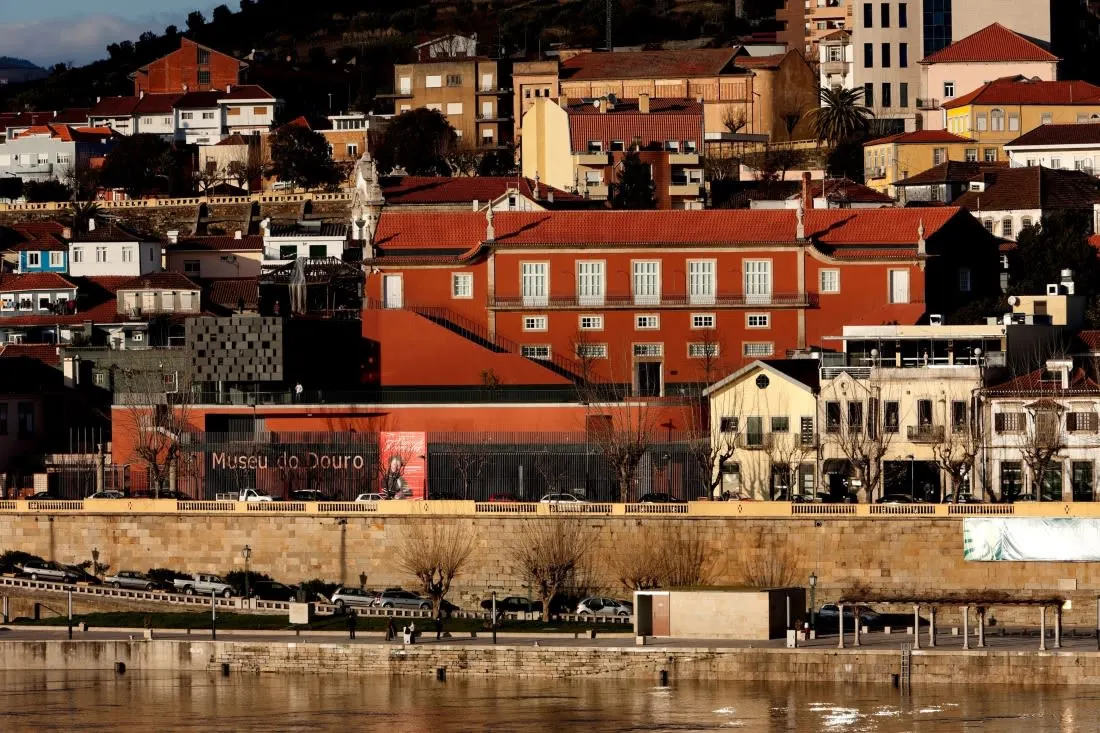
Douro Museum
 Highlight of Douro River Excursion
Highlight of Douro River ExcursionThis Museum proudly communicates the history of the Douro, and of course, port wine.
The Museu do Douro in Régua, Portugal, stands as a tribute to the region’s long history and viticultural heritage. Nestled in the heart of the Douro Valley, a UNESCO World Heritage site, the museum captures the evolution of the wine industry through a fascinating array of exhibits. Visitors can explore everything from the ancient tools used in wine production to multimedia presentations that bring the valley's scenic beauty and historical significance to life. This museum celebrates the past and present of Douro wine while providing panoramic views of the surrounding terraced vineyards, making it a highlight for anyone visiting the region.

Pinhão
 Highlight of Douro River Excursion
Highlight of Douro River ExcursionEnter this village built between river and mountain, and enjoy a walk and meal among the vines.
Pinhão rests at one of the most picturesque corners of the endlessly picturesque Duoro River Valley. Inhabited since prehistoric times, today the village serves as a waystation for visitors exploring the crenalated landscapes of the Duoro River valley. A delightful place to pause for lunch or even a wine-tasting.

Douro Museum
 Highlight of Douro River Excursion
Highlight of Douro River ExcursionThis Museum proudly communicates the history of the Douro, and of course, port wine.
The Museu do Douro in Régua, Portugal, stands as a tribute to the region’s long history and viticultural heritage. Nestled in the heart of the Douro Valley, a UNESCO World Heritage site, the museum captures the evolution of the wine industry through a fascinating array of exhibits. Visitors can explore everything from the ancient tools used in wine production to multimedia presentations that bring the valley's scenic beauty and historical significance to life. This museum celebrates the past and present of Douro wine while providing panoramic views of the surrounding terraced vineyards, making it a highlight for anyone visiting the region.

Pinhão
 Highlight of Douro River Excursion
Highlight of Douro River ExcursionEnter this village built between river and mountain, and enjoy a walk and meal among the vines.
Pinhão rests at one of the most picturesque corners of the endlessly picturesque Duoro River Valley. Inhabited since prehistoric times, today the village serves as a waystation for visitors exploring the crenalated landscapes of the Duoro River valley. A delightful place to pause for lunch or even a wine-tasting.

Douro Museum
 Highlight of Douro River Excursion
Highlight of Douro River ExcursionThis Museum proudly communicates the history of the Douro, and of course, port wine.
The Museu do Douro in Régua, Portugal, stands as a tribute to the region’s long history and viticultural heritage. Nestled in the heart of the Douro Valley, a UNESCO World Heritage site, the museum captures the evolution of the wine industry through a fascinating array of exhibits. Visitors can explore everything from the ancient tools used in wine production to multimedia presentations that bring the valley's scenic beauty and historical significance to life. This museum celebrates the past and present of Douro wine while providing panoramic views of the surrounding terraced vineyards, making it a highlight for anyone visiting the region.
prev
next

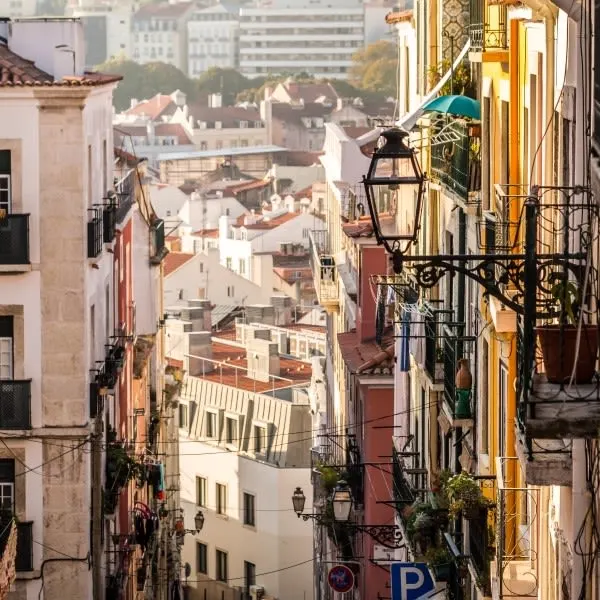
Day 13
Lisbon
View More
Day 13
Lisbon




10:00 AM - 1:00 PM
Introduction to Lisbon Tour: Bairro Alto, Chiado, and Baixa
Immerse yourself in the centuries of history on this 3 hour winding walking tour through the heart of Lisbon. Get acquainted with Lisbon's three most influential neighbourhoods, Bairro Alto, Chiado and Baixa with an expert Lisbon guide who specialises in history and archaeology.

Day 13
Lisbon
View More


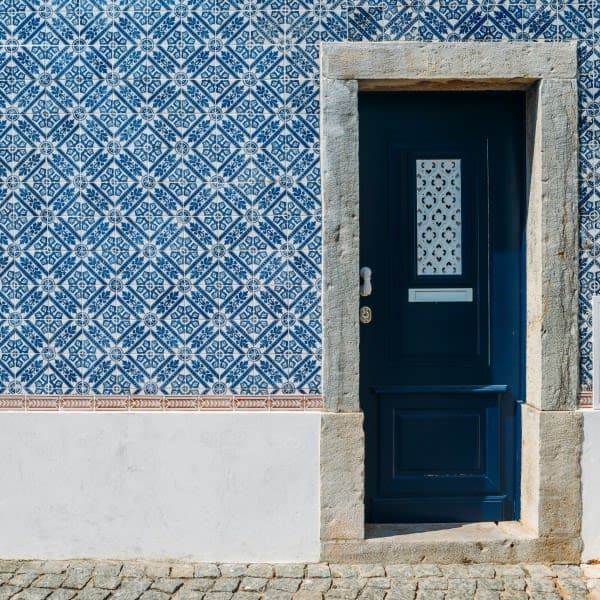
Day 14
Lisbon
View More
Day 14
Lisbon


Morning/Mid-Day
Be a Royal Beach Bum at Cascais
Enjoy beaches fit for a queen, See the "Mouth of Hell," or get a nice meal and a glass of wine. They're all options in Cascais. This long famous beach-town boasts the Praia da Reinha, "The Queen's Beach." The queen in question: Amelia, the last of her status in Portugal. If this one is full, there will be space at the neighboring beaches, one titled "Beach of the Duchess." On the opposite side of this city, the oceans isn't so calm, and it roars and erupts under a natural bridge -- giving rise to the name, "Boco do Inferno." With a heritage of royalty, the standard of food has to be high. Whether in the center, or beyond the Boco, you'll find a wide selection of restaurants and demur bars for a regal time.

Santa Marta Lighthouse
Admire this very aesthetically pleasing lighthouse.
Show More

Casa das Histórias--Paula Rego
Discover artistic depths away from the ocean at the Casa das Histórias--Paula Rego
Show More

Boca do Inferno
Come for the dramatic rock formation and crashing waves at Boca do Inferno, stay for a bit of cinematographic history.
Show More

Praias da Conceição, & da Duquesa (Two Beaches)
Get a little sun and ocean in Cascais, but you won't be alone.
Show More

Santa Marta Lighthouse
Admire this very aesthetically pleasing lighthouse.
Show More

Casa das Histórias--Paula Rego
Discover artistic depths away from the ocean at the Casa das Histórias--Paula Rego
Show More

Boca do Inferno
Come for the dramatic rock formation and crashing waves at Boca do Inferno, stay for a bit of cinematographic history.
Show More

Praias da Conceição, & da Duquesa (Two Beaches)
Get a little sun and ocean in Cascais, but you won't be alone.
Show More
prev
next

Day 14
Lisbon
View More

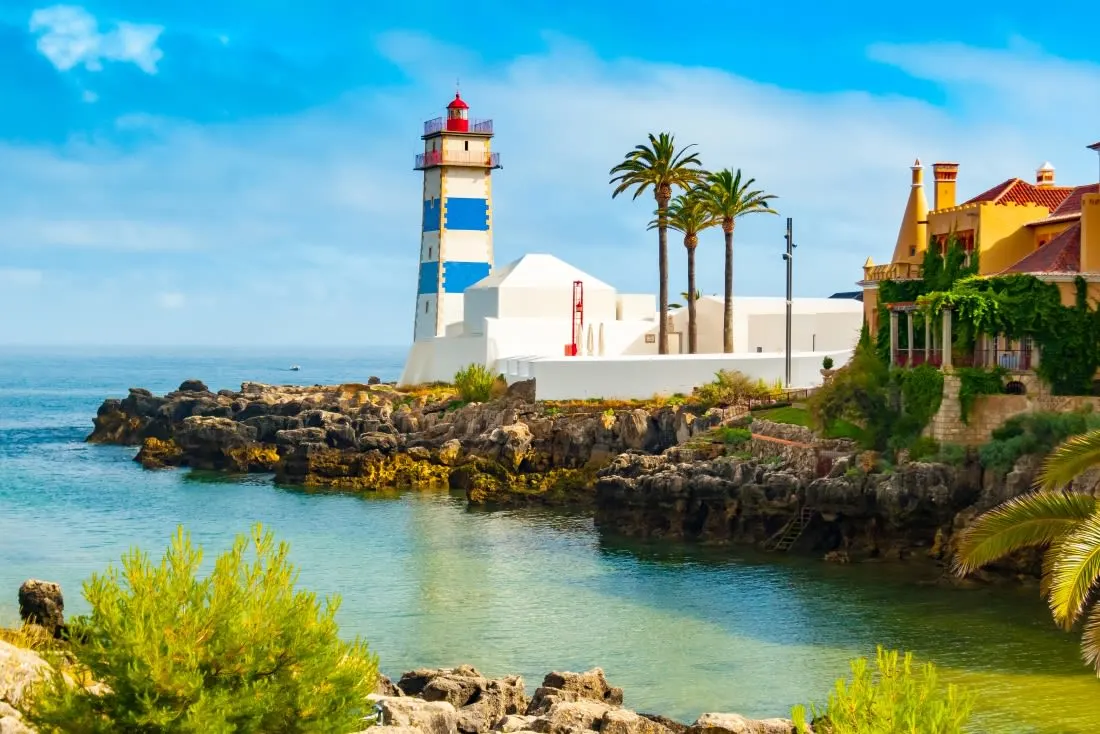
Santa Marta Lighthouse
 Highlight of Excursion to Cascais
Highlight of Excursion to CascaisAdmire this very aesthetically pleasing lighthouse.
Santa Marta Lighthouse is a picturesque beacon located on the edge of Cascais, guiding ships along the rugged coast since the 19th century. The lighthouse, with its distinctive blue and white tiles, also houses a museum that offers insights into the history of Portuguese maritime navigation. The surrounding area provides stunning views of the Atlantic, making it a perfect spot for photography enthusiasts.
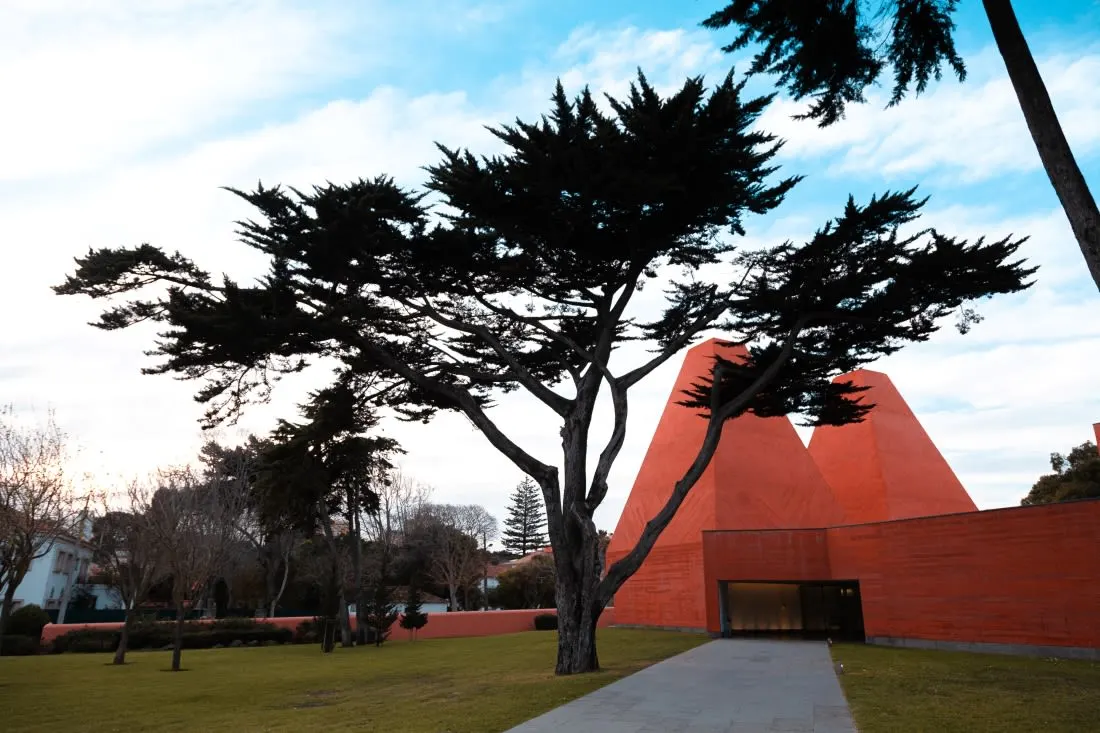
Casa das Histórias--Paula Rego
 Highlight of Excursion to Cascais
Highlight of Excursion to CascaisDiscover artistic depths away from the ocean at the Casa das Histórias--Paula Rego
Casa das Histórias--Paula Rego Casa das Histórias is a contemporary art museum dedicated to the works of Paula Rego, one of Portugal's most celebrated artists. Located in Cascais, the museum's unique architecture, designed by Eduardo Souto de Moura, complements the bold and expressive nature of Rego's art. Visitors can explore a wide range of her works, including paintings, drawings, and prints, in this thoughtfully curated space.
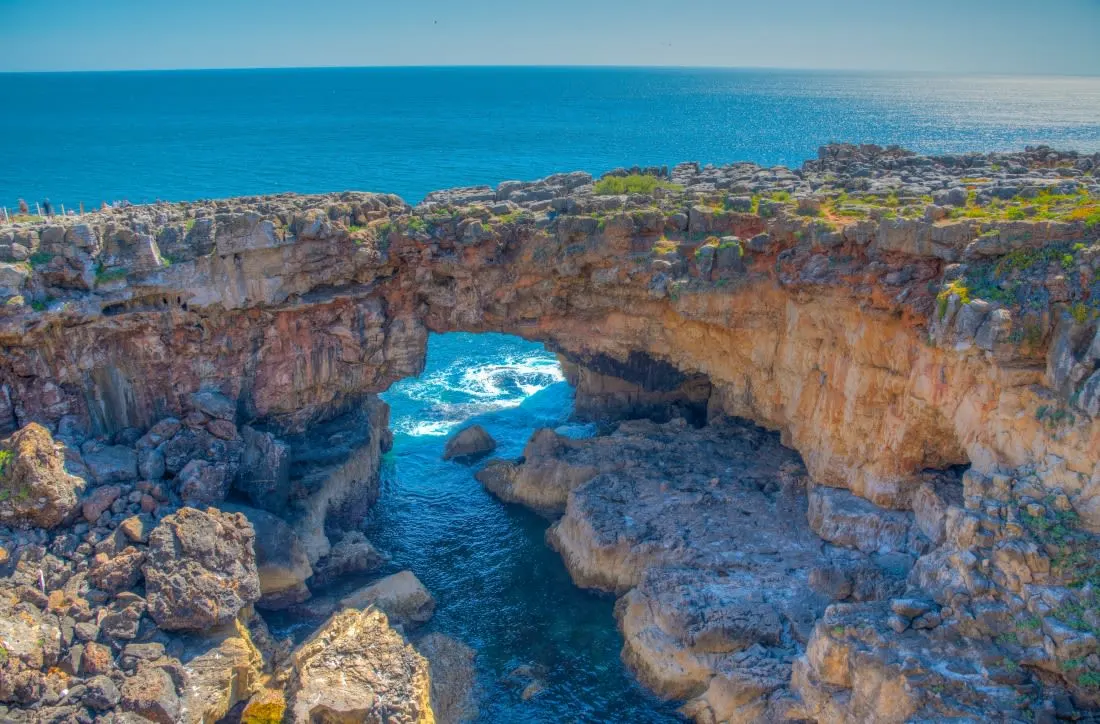
Boca do Inferno
 Highlight of Excursion to Cascais
Highlight of Excursion to CascaisCome for the dramatic rock formation and crashing waves at Boca do Inferno, stay for a bit of cinematographic history.
Known as "Hell’s Mouth," this natural chasm on the rugged coastline is a spectacular sight, especially when waves crash into the rocks with thunderous force. It's a popular spot for photography and offers a glimpse into the power of the Atlantic Ocean. Fun fact: The Boco is the location of the world's first cinematic recording of a wave, a 1896 film called, "A Sea Cave in Lisbon," shot by Henry Short and produced by Robert Paul. The film is silent, of course, and lasts around 13 seconds, but even if it had been two hours, it still would have been a "Short" film!

Praias da Conceição, & da Duquesa (Two Beaches)
 Highlight of Excursion to Cascais
Highlight of Excursion to CascaisGet a little sun and ocean in Cascais, but you won't be alone.
Praias (Beaches) da Rainha, da Conceição, & da Duquesa are all within 7 minutes walking of Cascais Train Station. As such, they are quite popular with visitors and locals alike. Da Rainha is the closest and smallest beach, da Conceição, & da Duquesa lay on the other side of da Rainha heading away from town. Hidden inside the bay, all three generally have calm water, and all boast restaurants and bathrooms. Enjoy the chance for some sunshine and meeting new people!

Santa Marta Lighthouse
 Highlight of Excursion to Cascais
Highlight of Excursion to CascaisAdmire this very aesthetically pleasing lighthouse.
Santa Marta Lighthouse is a picturesque beacon located on the edge of Cascais, guiding ships along the rugged coast since the 19th century. The lighthouse, with its distinctive blue and white tiles, also houses a museum that offers insights into the history of Portuguese maritime navigation. The surrounding area provides stunning views of the Atlantic, making it a perfect spot for photography enthusiasts.

Casa das Histórias--Paula Rego
 Highlight of Excursion to Cascais
Highlight of Excursion to CascaisDiscover artistic depths away from the ocean at the Casa das Histórias--Paula Rego
Casa das Histórias--Paula Rego Casa das Histórias is a contemporary art museum dedicated to the works of Paula Rego, one of Portugal's most celebrated artists. Located in Cascais, the museum's unique architecture, designed by Eduardo Souto de Moura, complements the bold and expressive nature of Rego's art. Visitors can explore a wide range of her works, including paintings, drawings, and prints, in this thoughtfully curated space.

Boca do Inferno
 Highlight of Excursion to Cascais
Highlight of Excursion to CascaisCome for the dramatic rock formation and crashing waves at Boca do Inferno, stay for a bit of cinematographic history.
Known as "Hell’s Mouth," this natural chasm on the rugged coastline is a spectacular sight, especially when waves crash into the rocks with thunderous force. It's a popular spot for photography and offers a glimpse into the power of the Atlantic Ocean. Fun fact: The Boco is the location of the world's first cinematic recording of a wave, a 1896 film called, "A Sea Cave in Lisbon," shot by Henry Short and produced by Robert Paul. The film is silent, of course, and lasts around 13 seconds, but even if it had been two hours, it still would have been a "Short" film!

Praias da Conceição, & da Duquesa (Two Beaches)
 Highlight of Excursion to Cascais
Highlight of Excursion to CascaisGet a little sun and ocean in Cascais, but you won't be alone.
Praias (Beaches) da Rainha, da Conceição, & da Duquesa are all within 7 minutes walking of Cascais Train Station. As such, they are quite popular with visitors and locals alike. Da Rainha is the closest and smallest beach, da Conceição, & da Duquesa lay on the other side of da Rainha heading away from town. Hidden inside the bay, all three generally have calm water, and all boast restaurants and bathrooms. Enjoy the chance for some sunshine and meeting new people!
prev
next


Day 15
Depart Lisbon
View More
Day 15
Depart Lisbon

To Be Determined
Getting to the Airport by Taxi or Metro
Lisbon Airport, officially known as Humberto Delgado Airport, is the busiest airport in Portugal. The journey from the city center to the airport typically takes around 15-20 minutes. The airport has two main terminals: Terminal 1 is used for international flights and most airlines, while Terminal 2 handles low-cost carriers. The airport is modern and equipped with various amenities, including shops, restaurants, and lounges. We recommend getting to the airport a little more than 2 hours to spare before your flight's departure to allow for any unexpected delays and time for check-in and security procedures. If you are flying outside of the Schengen zone, put 3 hours between your arrival and your flight.

Day 15
Depart Lisbon
View More


What's Included In Your Trip

Pre-Paid Tours and Activities:
- Medieval & Modernist, the Highlights of Barcelona Tour
- Highlights of Madrid Private Walking Tour
- Self-Guided Excursion to Majestic Toledo
- Highlights of Porto Private Guided Walking Tour
- Introduction to Lisbon Tour: Bairro Alto, Chiado, and Baixa
- Lisbon Belém Tour with Jerónimos Monastery
- City Cards for Barcelona and Lisbon, including discounts to many popular attractions

Pre-Paid Transportation:
- 2nd Class Train Tickets from Paris to Barcelona
- 2nd Class Train Tickets from Barcelona Sants to Madrid-Puerta de Atocha
- 2nd Class Train Tickets from Porto to Lisbon
- Public Transport Tickets for Barcelona and Lisbon

Accommodation:
- 4 nights at a hotel of your choice in Paris
- 4 nights at a hotel of your choice in Barcelona
- 4 nights at a hotel of your choice in Madrid
- 3 nights at a hotel of your choice in Porto
- 4 nights at a hotel of your choice in Lisbon

Go Real Travel Mobile App:
- Itinerary Plan & Reservations Info
- Points of Interest
- Detailed Travel Information
- Maps & Directions
Other Trips You May Like

7 Days
From$1998USD

14 Days
From$2259USD

7 Days
From$1700USD

10 Days
From$2890USD

14 Days
From$3679USD

21 Days
From$5160USD

21 Days
From$4999USD

10 Days
From$2599USD

7 Days
From$1149USD

7 Days
From$1998USD

14 Days
From$2259USD

7 Days
From$1700USD

10 Days
From$2890USD

14 Days
From$3679USD

21 Days
From$5160USD

21 Days
From$4999USD

10 Days
From$2599USD

7 Days
From$1149USD
prev
next
Featured Blogs
prev
next
Our Customers Say It Best
Otto Chuy, Los Angeles, California
I am still surprised how everything worked as planned, without a hitch. All instructions in your itinerary were precise and correct. Your suggestions and comments in each of the locations we went to were very helpful. All your guides, without exception, were wonderful and exactly on time. 

Kathy Mongeau, Ottawa, Ontario
My sister, Ann Ibberson, and I have been back home for a few weeks now and still go on and on about our fabulous trip. We were just blown away in every respect. Given the fact that we only had 1 ½ weeks, you had everything arranged for us so efficiently and your contacts who we dealt with for transfers, tours, hotels were extremely professional and personable. Things could not have gone better. 

Clive Andrew, Brisbane, Queensland
Just a quick note to let you know that I am back home now after probably the best overseas holiday that I have ever had, in no small part due to your very capable organization booking of hotels, tours, & trains. There was just nothing that went wrong with the timings etc. 

Malini Dutta, Boston, Massachusetts
We can't thank you enough for the detailed plans, maps, and suggestions. It really felt that someone was holding our hands and showing us around. We had all the excitement of discovering foreign lands, with none of the problems that can happen while negotiating unfamiliar places. In fact, all the cities felt like home within a few hours of arriving and exploring. 

Bev and Mark Frankel, Williamsburg, Virginia
We could not be more pleased with Go Real Travel! You took the guess work out of things like public transport but still managed to allow us the freedom to tour as we wanted. Our guides were exceptional and every time I saw a Viking Cruise tour of 25 people, I realized the quality experience we were getting with Go Real. 

Marianne Strydom, Paarl, South Africa
I just wanted to thank you for organizing an amazing trip for me – I packed in so much in such a short period of time and everything was just perfect. The way you do things makes it possible to really get to know the destination, which for me as a travel agent could not have been better. 

Otto Chuy, Los Angeles, California
I am still surprised how everything worked as planned, without a hitch. All instructions in your itinerary were precise and correct. Your suggestions and comments in each of the locations we went to were very helpful. All your guides, without exception, were wonderful and exactly on time. 

Kathy Mongeau, Ottawa, Ontario
My sister, Ann Ibberson, and I have been back home for a few weeks now and still go on and on about our fabulous trip. We were just blown away in every respect. Given the fact that we only had 1 ½ weeks, you had everything arranged for us so efficiently and your contacts who we dealt with for transfers, tours, hotels were extremely professional and personable. Things could not have gone better. 

Clive Andrew, Brisbane, Queensland
Just a quick note to let you know that I am back home now after probably the best overseas holiday that I have ever had, in no small part due to your very capable organization booking of hotels, tours, & trains. There was just nothing that went wrong with the timings etc. 

Malini Dutta, Boston, Massachusetts
We can't thank you enough for the detailed plans, maps, and suggestions. It really felt that someone was holding our hands and showing us around. We had all the excitement of discovering foreign lands, with none of the problems that can happen while negotiating unfamiliar places. In fact, all the cities felt like home within a few hours of arriving and exploring. 

Bev and Mark Frankel, Williamsburg, Virginia
We could not be more pleased with Go Real Travel! You took the guess work out of things like public transport but still managed to allow us the freedom to tour as we wanted. Our guides were exceptional and every time I saw a Viking Cruise tour of 25 people, I realized the quality experience we were getting with Go Real. 

Marianne Strydom, Paarl, South Africa
I just wanted to thank you for organizing an amazing trip for me – I packed in so much in such a short period of time and everything was just perfect. The way you do things makes it possible to really get to know the destination, which for me as a travel agent could not have been better. 



Explore cities in more detail

Porto
With cliffs like these, who needs skyscrapers? Porto drapes its steep hillsides with colorful homes, ancient palaces, convents, and factories, each telling a story. These precipitous structures loom above the bustling Ribeira District, or sparkle like jewels when viewed from the venerable Clérigos Tower, perched on a central hilltop. Porto can be sunny or rainy, just like its architecture; the sober, local granite provides a solid foundation from which bright azulejos tiles radiate warmth. The locals’ homes that still grace even the most touristed areas are as thrilling to see as the iconic Sé Cathedral. Explore Porto's winding streets through the Centro Histórico, marvel at the nearly magical Lello bookstore, sip and snack your way through the vibrant Bolhão market, or delve into the rich history of port wine. With our Porto travel guide and tailored Porto travel itineraries, you’ll uncover delightful contrasts of old and new. No matter where you wander, Porto promises to leave you with sweet memories of its breathtaking heights and vibrant spirit.
Read More
Learn About Porto
Build Porto Trip
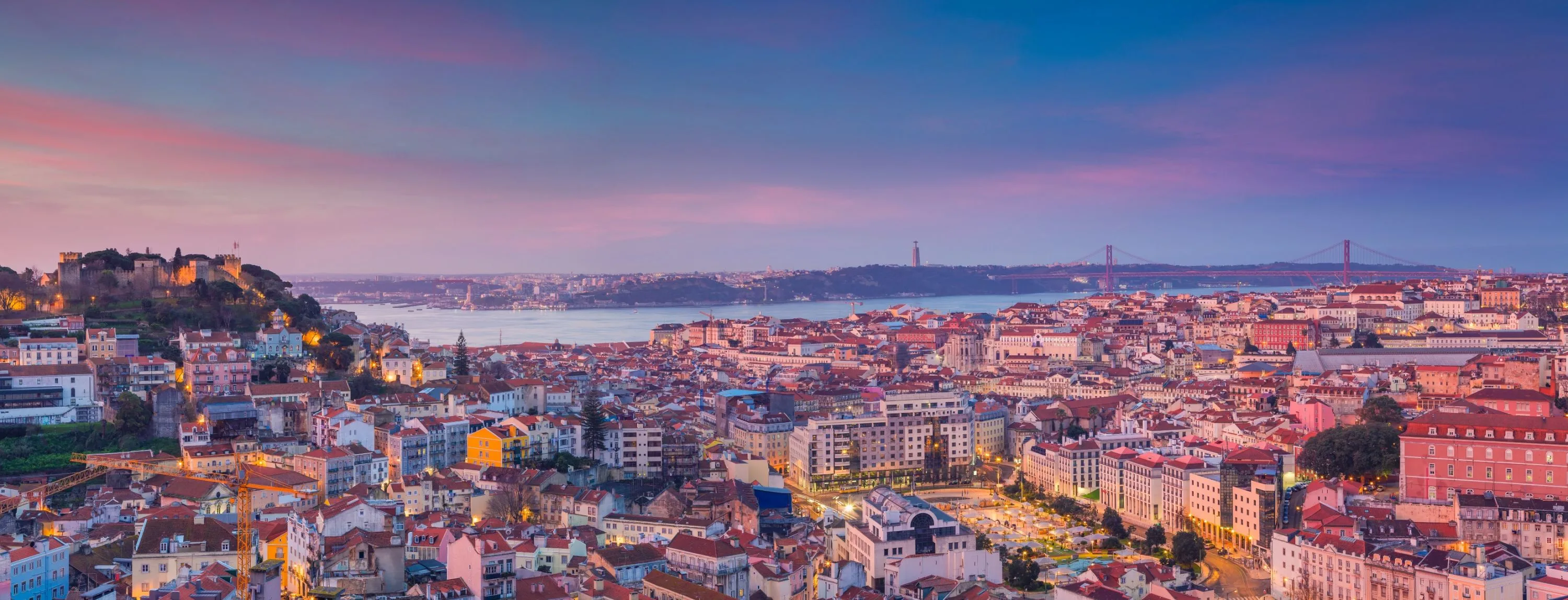
Lisbon
The charm of Lisbon is simply irresistible. One of Europe's "forgotten" capitals, Lisbon effortlessly blends old-world history with a modern, cosmopolitan vibe. A must-visit destination for any traveler, Lisbon offers iconic sights like the historic Belém Tower and the stunning Jerónimos Monastery, both UNESCO World Heritage Sites. There is so much to experience in this city, and it helps to explore it through your own personal interests. Foodie? You’re in luck. Lisbon's cuisine will capture your heart with fresh seafood at Mercado da Ribeira and the famed pastéis de nata from Pastéis de Belém. Love history? Discover the city’s past through the ancient streets of Alfama, where every corner unveils a piece of Lisbon’s storied heritage, from Roman influences to the Age of Exploration. Art and architecture lovers will be enchanted by the Azulejos (traditional tiles) that decorate the city, or can dive into contemporary works at the MAAT museum. And as you climb the hills of Bairro Alto or gaze across the city from the iconic viewpoint at Miradouro da Senhora do Monte, you'll realize that Lisbon’s beauty never fades. Whether riding a vintage tram through the narrow streets or watching the sunset over the River Tagus, it’s easy to fall in love with this sun-drenched gem of Portugal.
Read More
Learn About Lisbon
Build Lisbon Trip

Brussels
It feels as though everything in Brussels is tinted with gold. From the gilded rooftops of the old houses on the Grand Palace to the foil-wrapped bonbons piled in chocolatier windows, Brussels seems to sparkle and wink at you around every corner. Aside from the lustrous architecture and Trappist ales, this shiny city is probably still best known for its iconic street food options: salty, golden fries, and fluffy, honey-colored waffles. While a major political center, home of the EU and NATO, don’t be fooled by Brussels stern ‘Eurocratic’ facade. Brussels revels in cheeky humor and mischief. So much so, Brussel’s beloved mascot, the ‘Manneken Pis’, is a statue of a small child urinating into a fountain. The city takes great pleasure in dressing this statue in festive-themed costumes. It’s no surprise that the artist Magritte, one of the great visual tricksters of the 20th century, called Brussels home. After a few days exploring the city, and taking in its sights and scenes, you’re sure to come away smiling.
Read More
Learn About Brussels
Build Brussels Trip
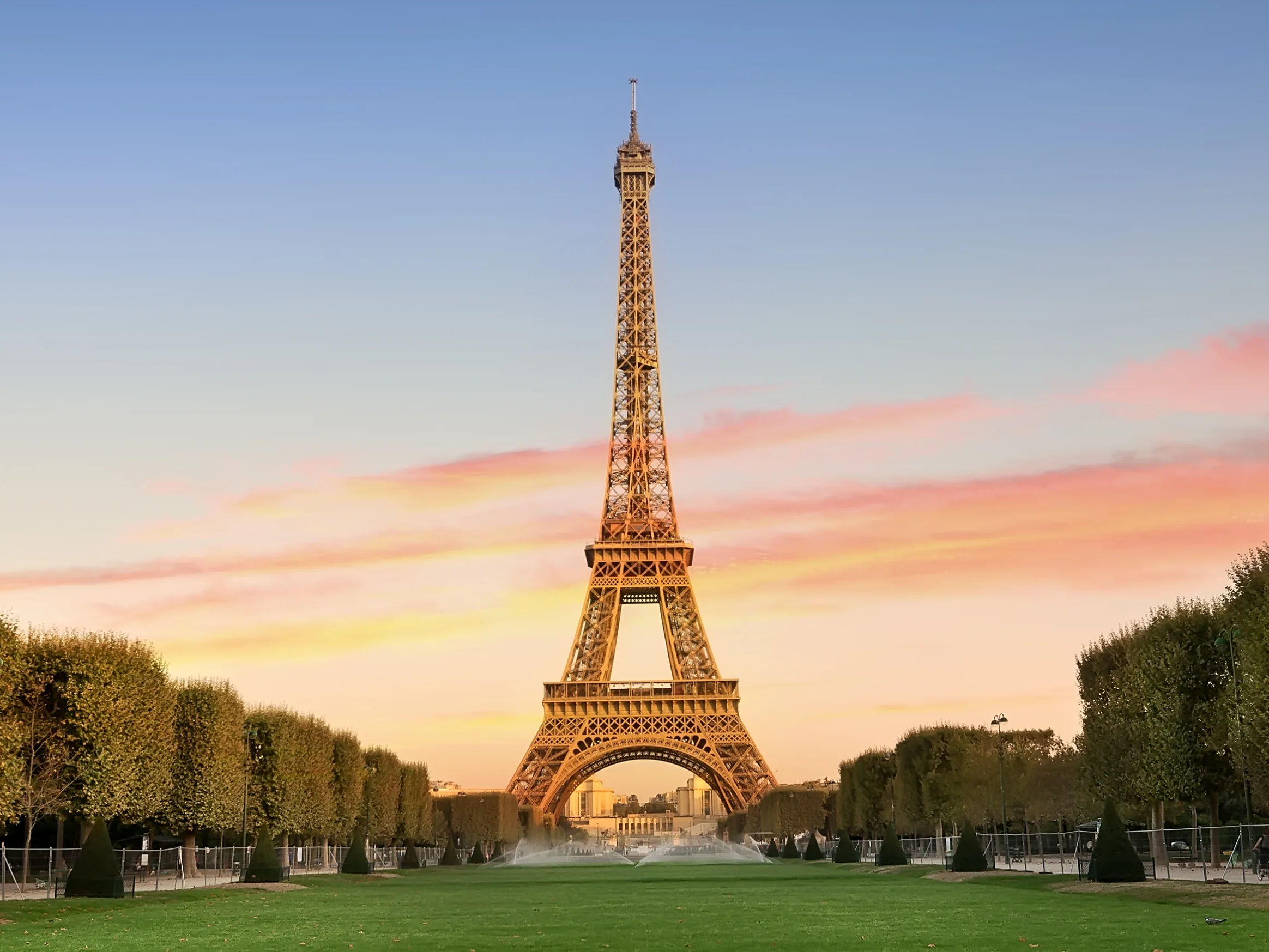
Paris
The magic of Paris is undeniable. This is the most romantic destination in Europe, and surely the number one bucket list destination of all time. If you want to say you've traveled, you have to visit Paris at least once. Along with classic must-sees like the Eiffel Tower and the Sacre-Coeur, there is so much to see and do in Paris that it helps to narrow it down by interest. Fashion and shopping enthusiast? Look no further than the Galeries Lafayette, Avenue des Champs-Élysées, or the Marais. Art aficionado? Once you're done with the Louvre, make a start on the Musée d'Orsay. History buffs won't be able to walk a block without uncovering a monument to Napoleon or Louis XIV. If you visit Paris with a foodie, be warned — you'll gaze in a lot of patisserie windows, and sample your weight in croissants. Because Paris always has so much on offer, it never grows old. At dusk, as you stroll the wide boulevards past Haussmann apartment buildings and sharply dressed Parisians, or gaze down at the city from the hill at Montmarte, you might find yourself saying 'Paris Je t' aime'. This is, after all, the City of Love.
Read More
Learn About Paris
Build Paris Trip

Barcelona
Barcelona, the cosmopolitan capital of Catalonia, is a city that dances to a rhythm of its own. Known for its architectural wonders and vibrant street life, this city is a tapestry of rich history and contemporary culture. Wander through its bustling streets and you'll feel the pulse of heritage and innovation beating as one. From the awe-inspiring Sagrada Familia to the colorful mosaics of Park Guell, Barcelona offers endless avenues to explore and discover. As the sun sets, the city transforms into a lively spectacle of lights and shadows, inviting you to indulge in its culinary delights and spirited nightlife. Whether you’re soaking up the Mediterranean sun on its beaches or exploring its Gothic quarters, Barcelona promises an unforgettable journey that will captivate your heart and stir your soul.
Read More
Learn About Barcelona
Build Barcelona Trip
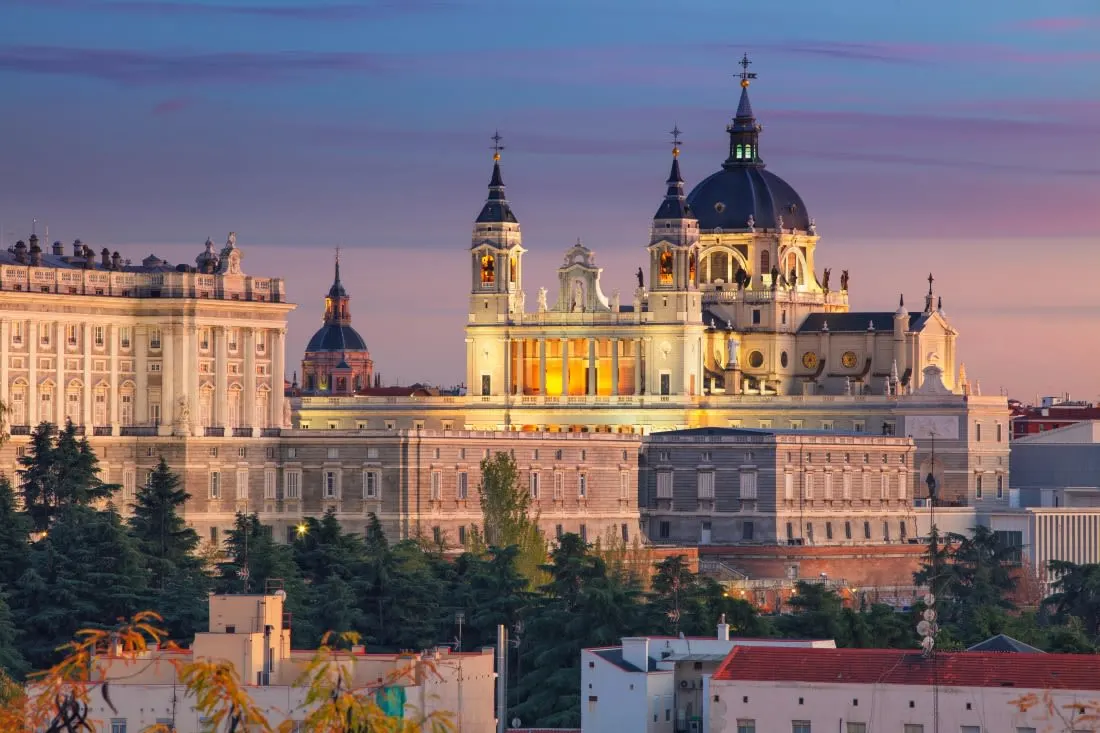
Madrid
What are the best Madrid recommendations for Madrid travel? Take two parts culture, two part history, douse it with art, sprinkle it all with lots of Spanish zest, and live vigorously: That's the recipe for Madrid, Spain's capital. Let Go Real be your guide to Madrid, the city alive with the rhythms of passionate flamenco on its cosmopolitan streets, inviting travelers into its warm embrace. Here, art enthusiasts can lose themselves in the hallowed halls of the Prado Museum, home to masterpieces by Velázquez, Goya, and El Greco, while the Reina Sofia and Thyssen-Bornemisza museums complete Madrid's famed Art Triangle, offering a journey through centuries of art history. The city's culinary scene is equally compelling, with tapas bars and bustling markets like Mercado San Miguel offering a taste of Spain's rich gastronomic heritage through an array of tapas, wines, and cheeses. Madrid's architectural splendor is evident in its royal palaces, ornate plazas, and expansive parks, such as the Retiro, a green oasis in the heart of the city where locals and tourists alike find respite by its serene lake. As night falls, Madrid's streets come alive with an infectious energy, from the historic tapas bars in the Latina district to the chic dancehalls in Malasaña and Chueca, reflecting the city's open-hearted spirit and its inhabitants' joie de vivre. With Go Real's Madrid sightseeing guide and using our Madrid tips, you will find the best place to bask in the sun at a lively terrace café, explore the treasures of the Hapsburg Madrid, or discover your own precious finds at Rastro's flea market. With our best Madrid travelguide, the city offers an endless array of experiences that beckon the curious traveler to taste its many charms.
Read More
Learn About Madrid
Build Madrid Trip

Porto
With cliffs like these, who needs skyscrapers? Porto drapes its steep hillsides with colorful homes, ancient palaces, convents, and factories, each telling a story. These precipitous structures loom above the bustling Ribeira District, or sparkle like jewels when viewed from the venerable Clérigos Tower, perched on a central hilltop. Porto can be sunny or rainy, just like its architecture; the sober, local granite provides a solid foundation from which bright azulejos tiles radiate warmth. The locals’ homes that still grace even the most touristed areas are as thrilling to see as the iconic Sé Cathedral. Explore Porto's winding streets through the Centro Histórico, marvel at the nearly magical Lello bookstore, sip and snack your way through the vibrant Bolhão market, or delve into the rich history of port wine. With our Porto travel guide and tailored Porto travel itineraries, you’ll uncover delightful contrasts of old and new. No matter where you wander, Porto promises to leave you with sweet memories of its breathtaking heights and vibrant spirit.
Read More
Learn About Porto
Build Porto Trip

Lisbon
The charm of Lisbon is simply irresistible. One of Europe's "forgotten" capitals, Lisbon effortlessly blends old-world history with a modern, cosmopolitan vibe. A must-visit destination for any traveler, Lisbon offers iconic sights like the historic Belém Tower and the stunning Jerónimos Monastery, both UNESCO World Heritage Sites. There is so much to experience in this city, and it helps to explore it through your own personal interests. Foodie? You’re in luck. Lisbon's cuisine will capture your heart with fresh seafood at Mercado da Ribeira and the famed pastéis de nata from Pastéis de Belém. Love history? Discover the city’s past through the ancient streets of Alfama, where every corner unveils a piece of Lisbon’s storied heritage, from Roman influences to the Age of Exploration. Art and architecture lovers will be enchanted by the Azulejos (traditional tiles) that decorate the city, or can dive into contemporary works at the MAAT museum. And as you climb the hills of Bairro Alto or gaze across the city from the iconic viewpoint at Miradouro da Senhora do Monte, you'll realize that Lisbon’s beauty never fades. Whether riding a vintage tram through the narrow streets or watching the sunset over the River Tagus, it’s easy to fall in love with this sun-drenched gem of Portugal.
Read More
Learn About Lisbon
Build Lisbon Trip

Brussels
It feels as though everything in Brussels is tinted with gold. From the gilded rooftops of the old houses on the Grand Palace to the foil-wrapped bonbons piled in chocolatier windows, Brussels seems to sparkle and wink at you around every corner. Aside from the lustrous architecture and Trappist ales, this shiny city is probably still best known for its iconic street food options: salty, golden fries, and fluffy, honey-colored waffles. While a major political center, home of the EU and NATO, don’t be fooled by Brussels stern ‘Eurocratic’ facade. Brussels revels in cheeky humor and mischief. So much so, Brussel’s beloved mascot, the ‘Manneken Pis’, is a statue of a small child urinating into a fountain. The city takes great pleasure in dressing this statue in festive-themed costumes. It’s no surprise that the artist Magritte, one of the great visual tricksters of the 20th century, called Brussels home. After a few days exploring the city, and taking in its sights and scenes, you’re sure to come away smiling.
Read More
Learn About Brussels
Build Brussels Trip

Paris
The magic of Paris is undeniable. This is the most romantic destination in Europe, and surely the number one bucket list destination of all time. If you want to say you've traveled, you have to visit Paris at least once. Along with classic must-sees like the Eiffel Tower and the Sacre-Coeur, there is so much to see and do in Paris that it helps to narrow it down by interest. Fashion and shopping enthusiast? Look no further than the Galeries Lafayette, Avenue des Champs-Élysées, or the Marais. Art aficionado? Once you're done with the Louvre, make a start on the Musée d'Orsay. History buffs won't be able to walk a block without uncovering a monument to Napoleon or Louis XIV. If you visit Paris with a foodie, be warned — you'll gaze in a lot of patisserie windows, and sample your weight in croissants. Because Paris always has so much on offer, it never grows old. At dusk, as you stroll the wide boulevards past Haussmann apartment buildings and sharply dressed Parisians, or gaze down at the city from the hill at Montmarte, you might find yourself saying 'Paris Je t' aime'. This is, after all, the City of Love.
Read More
Learn About Paris
Build Paris Trip

Barcelona
Barcelona, the cosmopolitan capital of Catalonia, is a city that dances to a rhythm of its own. Known for its architectural wonders and vibrant street life, this city is a tapestry of rich history and contemporary culture. Wander through its bustling streets and you'll feel the pulse of heritage and innovation beating as one. From the awe-inspiring Sagrada Familia to the colorful mosaics of Park Guell, Barcelona offers endless avenues to explore and discover. As the sun sets, the city transforms into a lively spectacle of lights and shadows, inviting you to indulge in its culinary delights and spirited nightlife. Whether you’re soaking up the Mediterranean sun on its beaches or exploring its Gothic quarters, Barcelona promises an unforgettable journey that will captivate your heart and stir your soul.
Read More
Learn About Barcelona
Build Barcelona Trip

Madrid
What are the best Madrid recommendations for Madrid travel? Take two parts culture, two part history, douse it with art, sprinkle it all with lots of Spanish zest, and live vigorously: That's the recipe for Madrid, Spain's capital. Let Go Real be your guide to Madrid, the city alive with the rhythms of passionate flamenco on its cosmopolitan streets, inviting travelers into its warm embrace. Here, art enthusiasts can lose themselves in the hallowed halls of the Prado Museum, home to masterpieces by Velázquez, Goya, and El Greco, while the Reina Sofia and Thyssen-Bornemisza museums complete Madrid's famed Art Triangle, offering a journey through centuries of art history. The city's culinary scene is equally compelling, with tapas bars and bustling markets like Mercado San Miguel offering a taste of Spain's rich gastronomic heritage through an array of tapas, wines, and cheeses. Madrid's architectural splendor is evident in its royal palaces, ornate plazas, and expansive parks, such as the Retiro, a green oasis in the heart of the city where locals and tourists alike find respite by its serene lake. As night falls, Madrid's streets come alive with an infectious energy, from the historic tapas bars in the Latina district to the chic dancehalls in Malasaña and Chueca, reflecting the city's open-hearted spirit and its inhabitants' joie de vivre. With Go Real's Madrid sightseeing guide and using our Madrid tips, you will find the best place to bask in the sun at a lively terrace café, explore the treasures of the Hapsburg Madrid, or discover your own precious finds at Rastro's flea market. With our best Madrid travelguide, the city offers an endless array of experiences that beckon the curious traveler to taste its many charms.
Read More
Learn About Madrid
Build Madrid Trip
prev
next


 Map of Your Itinerary Route
Map of Your Itinerary Route
Zoom In to the cities to see your itinerary in more detail


 4.8
4.8 

